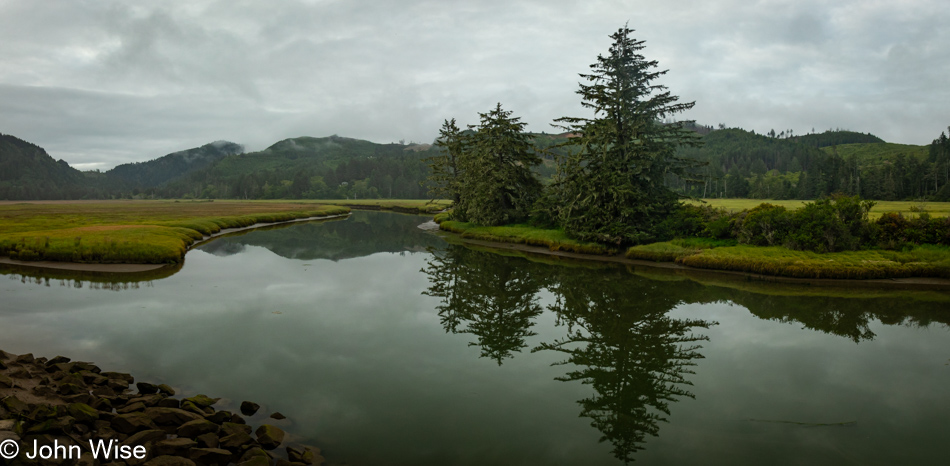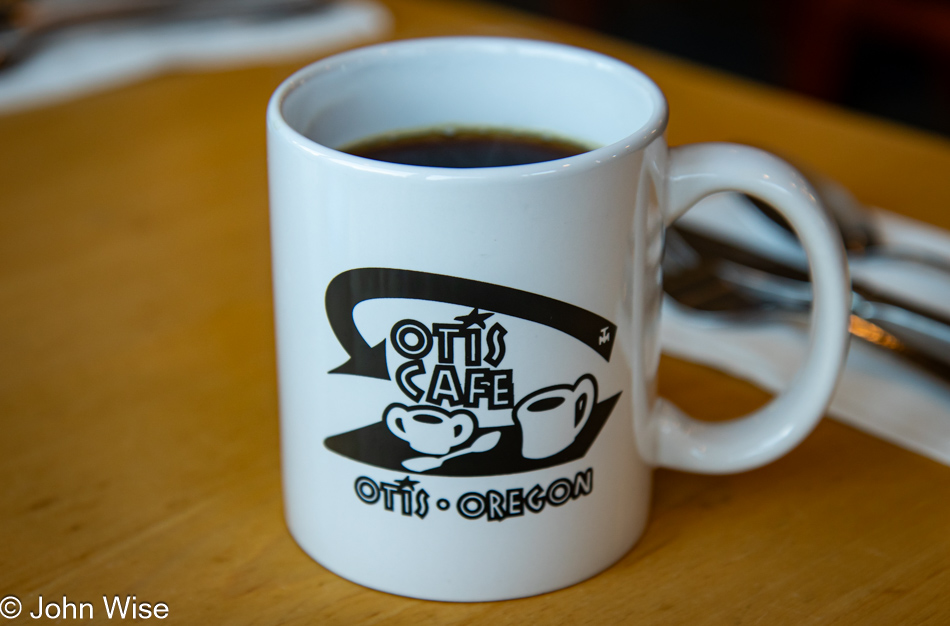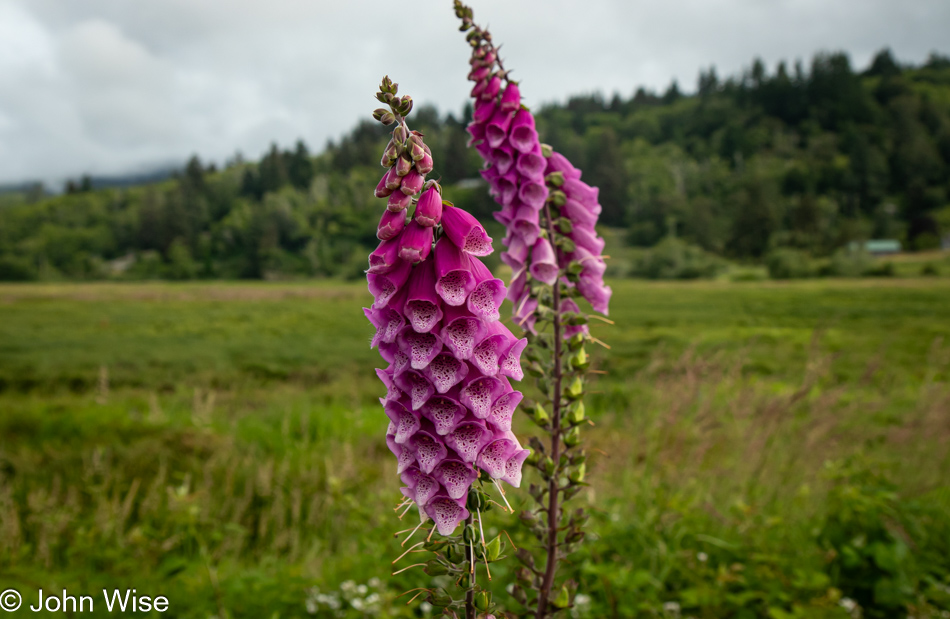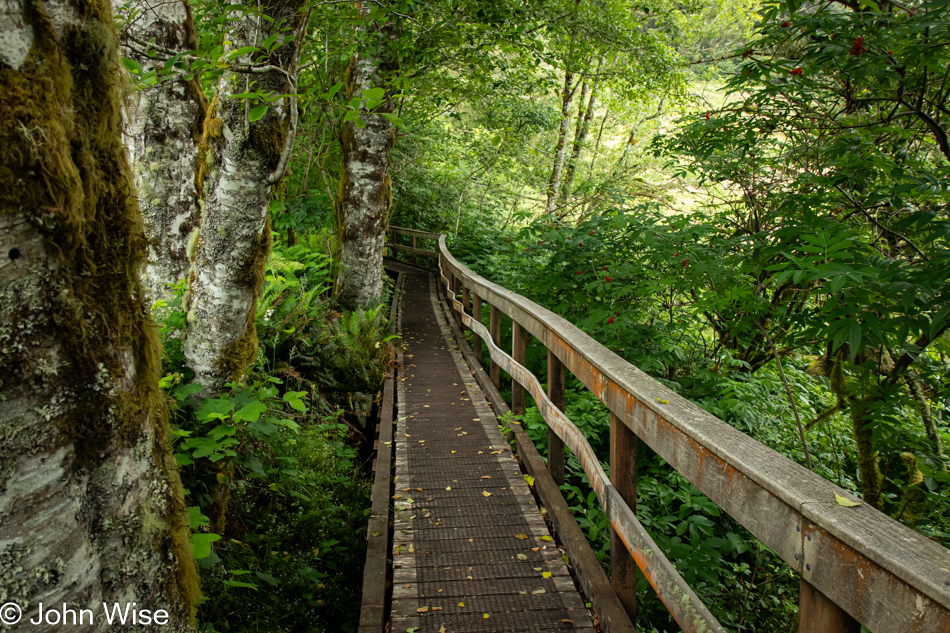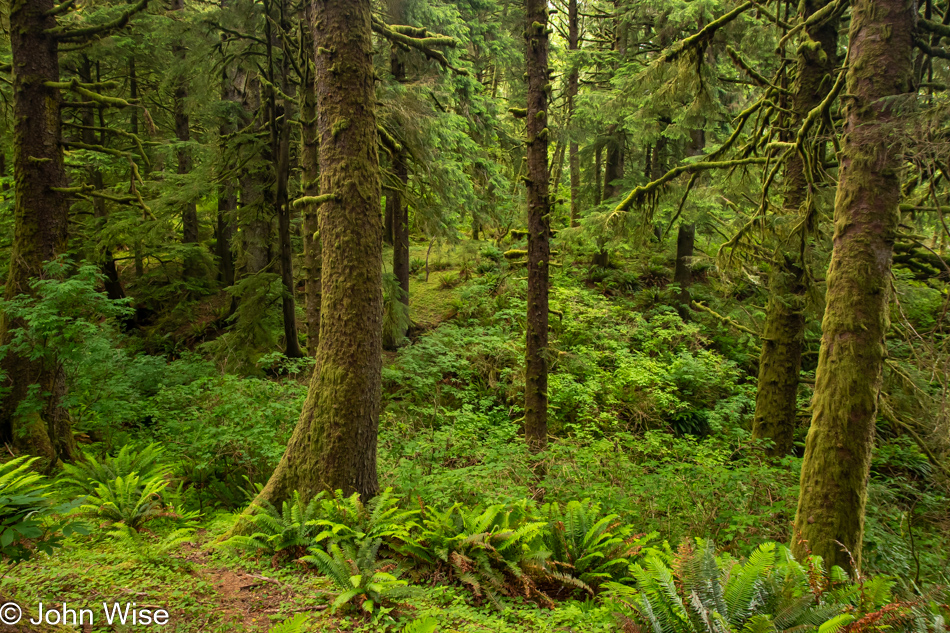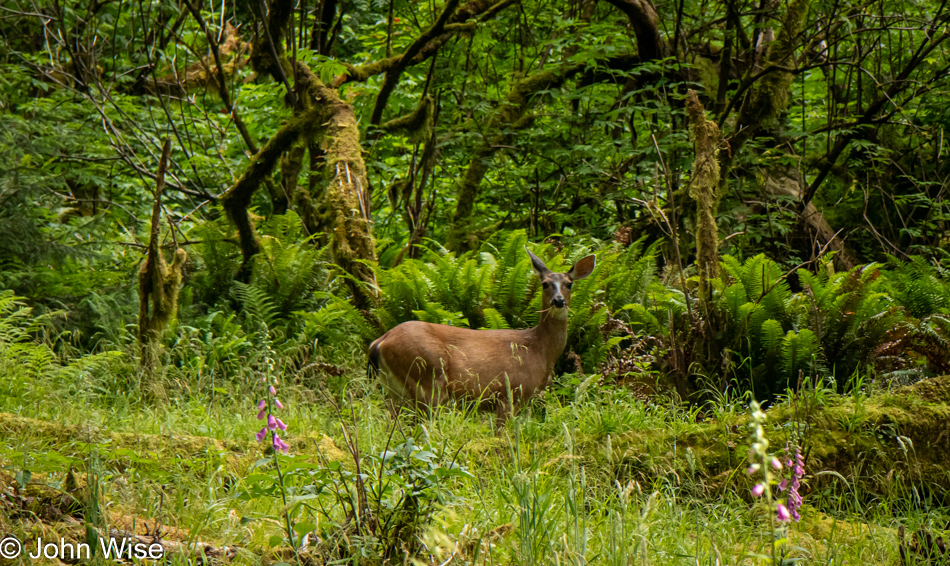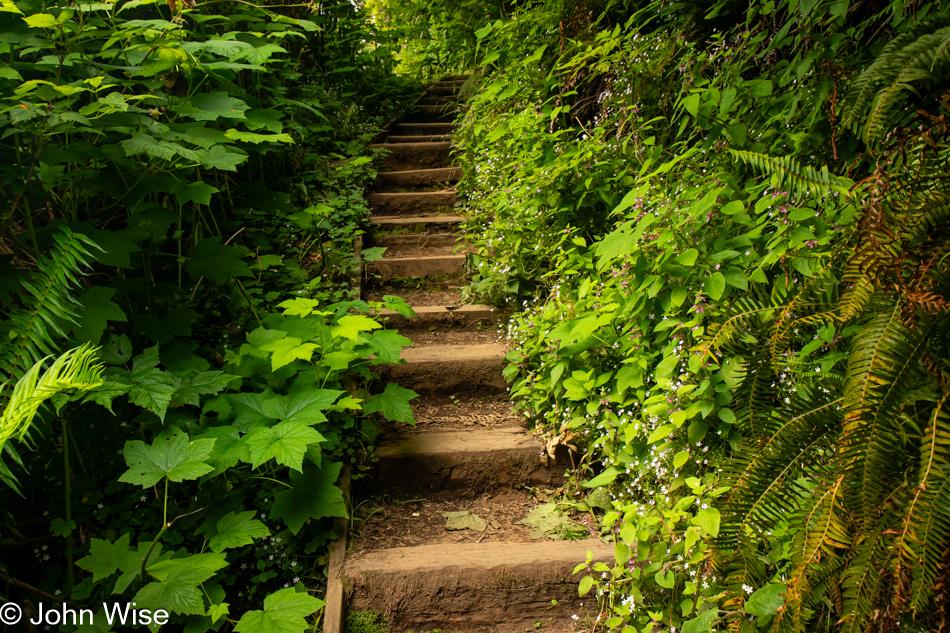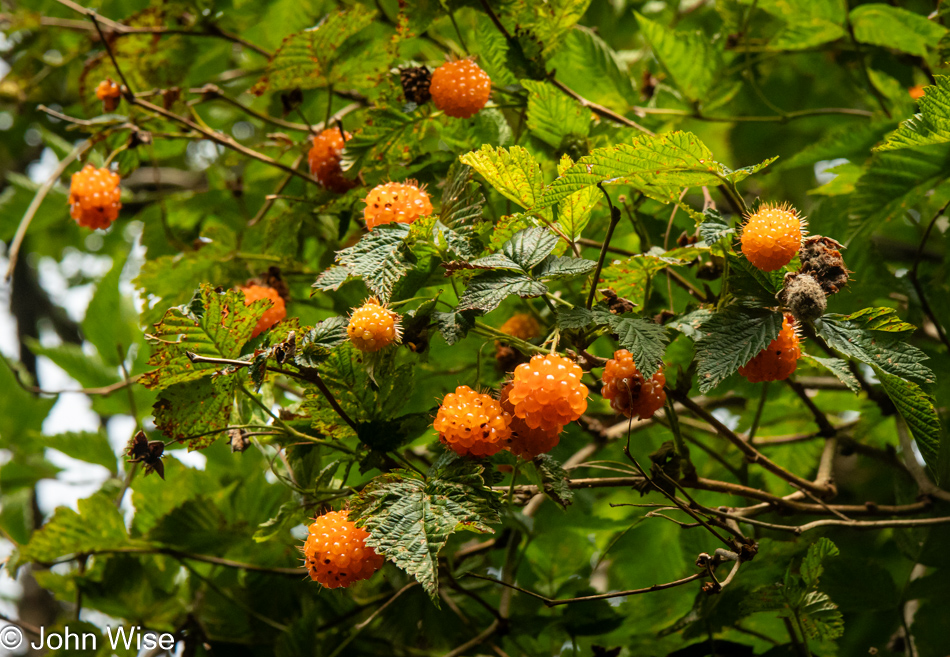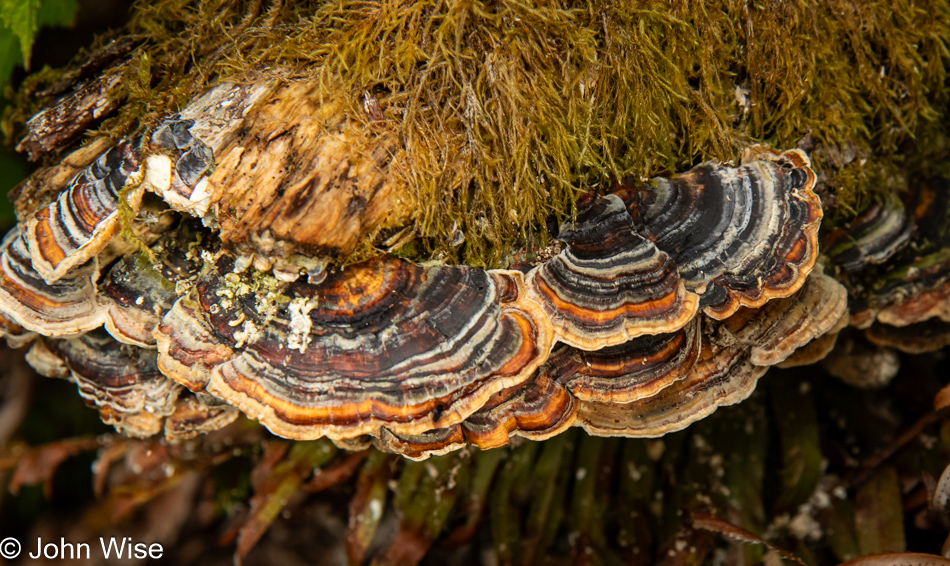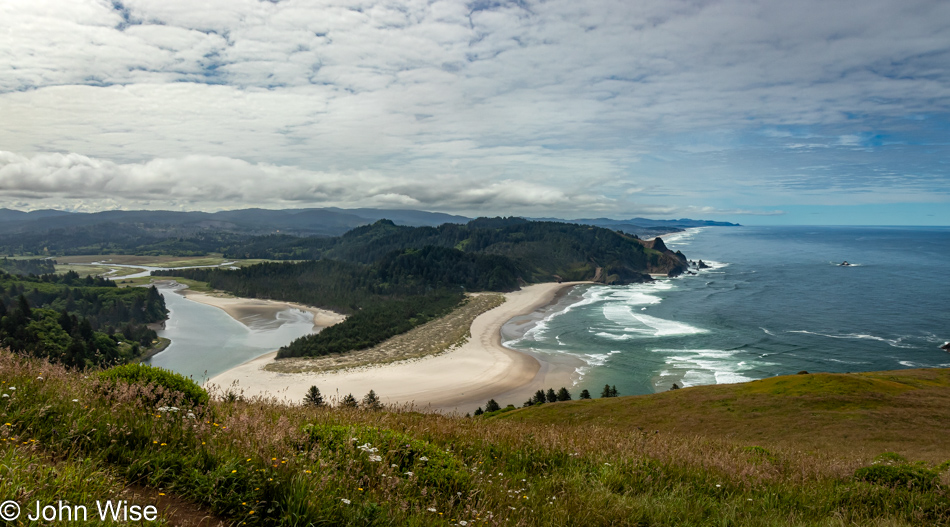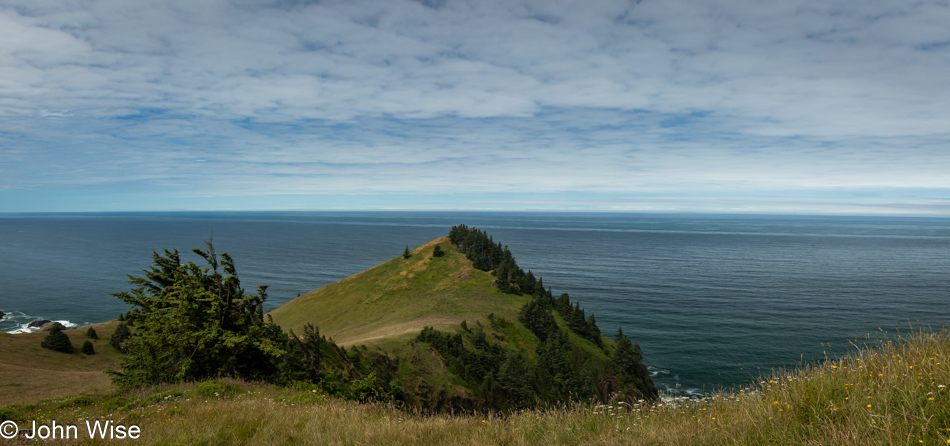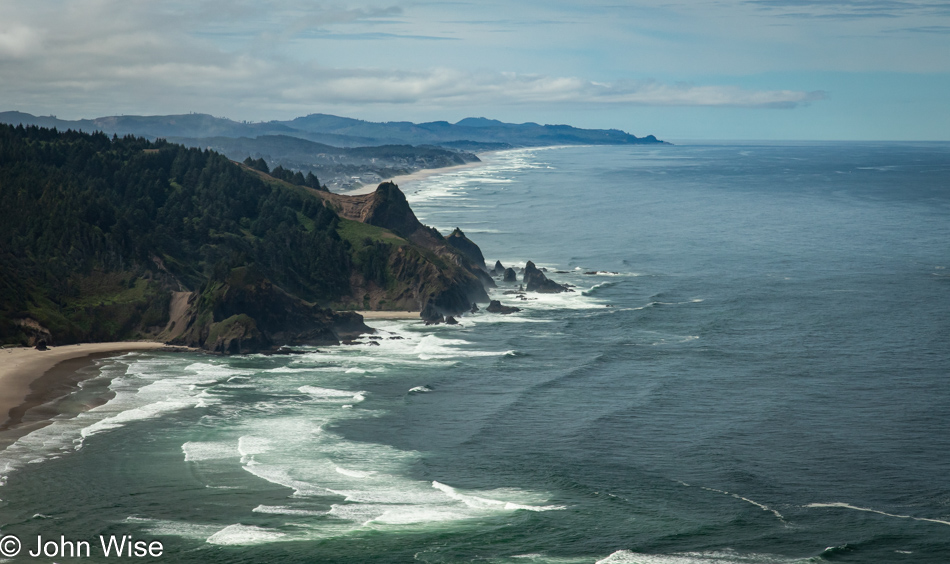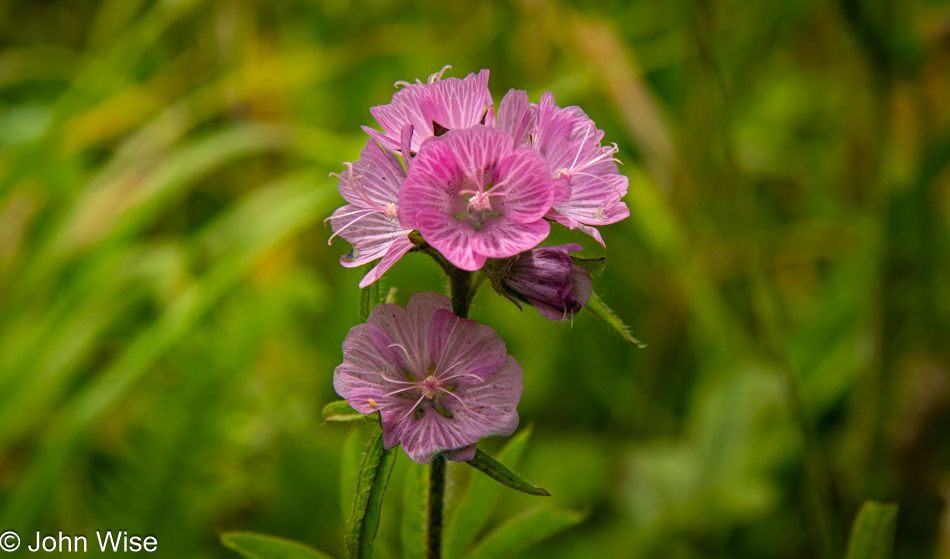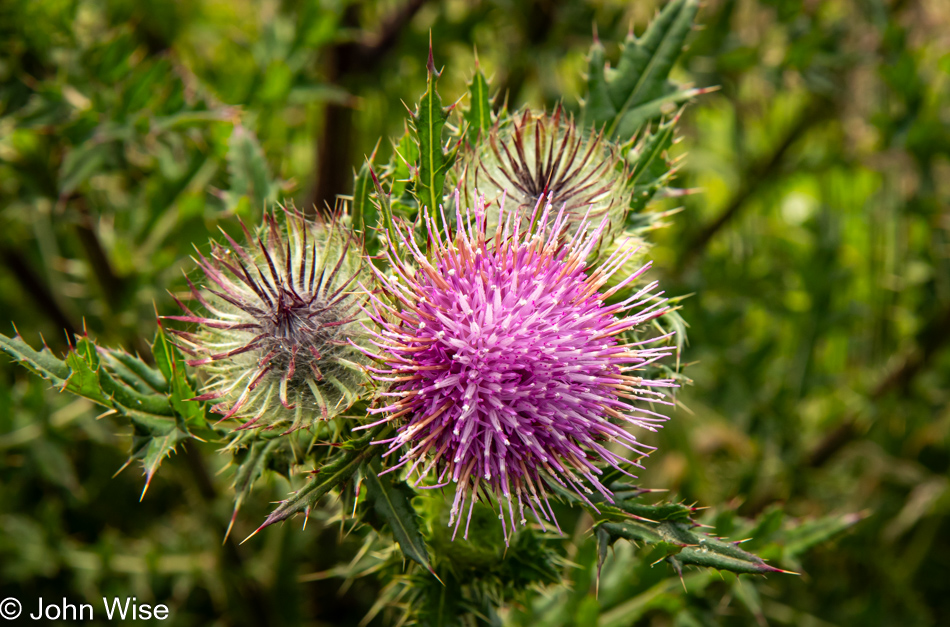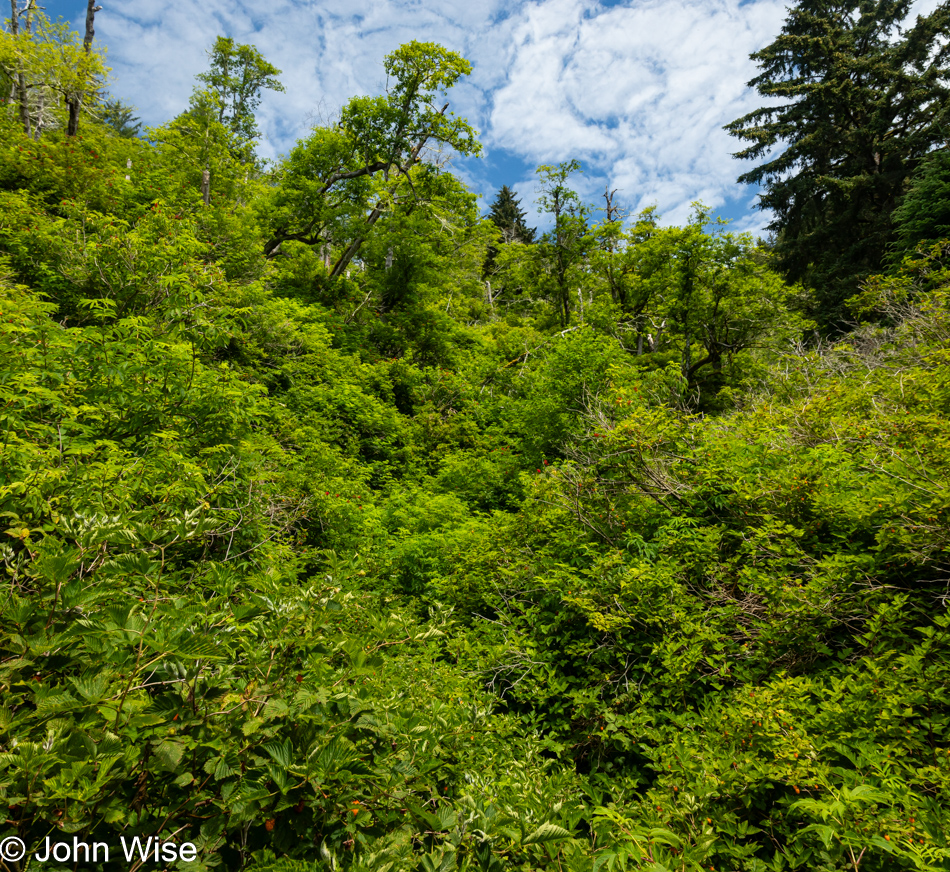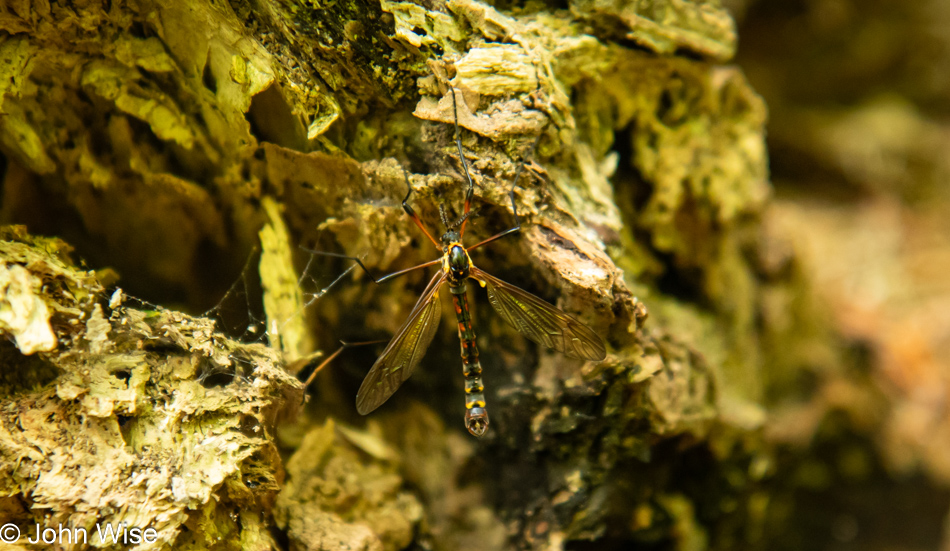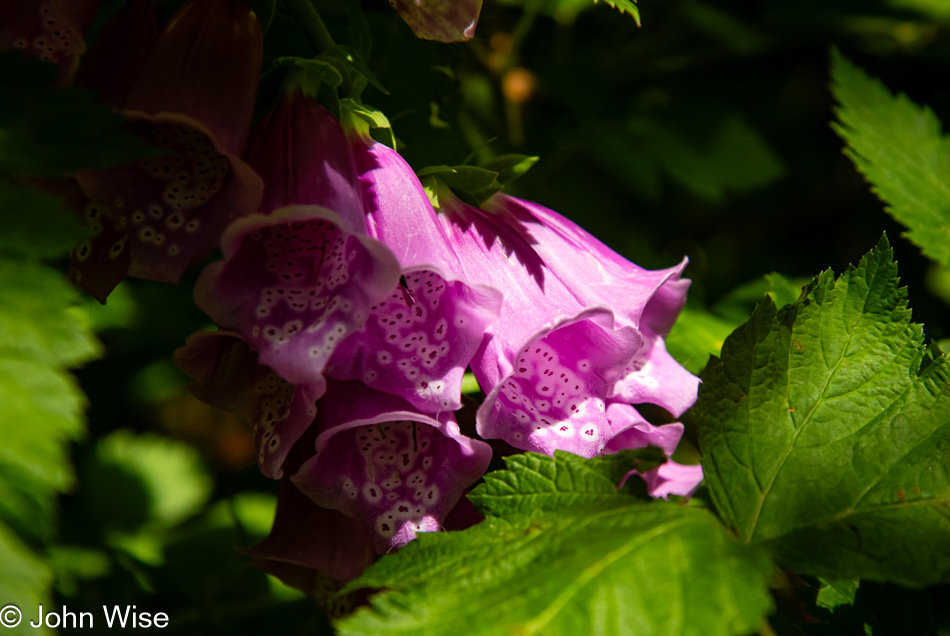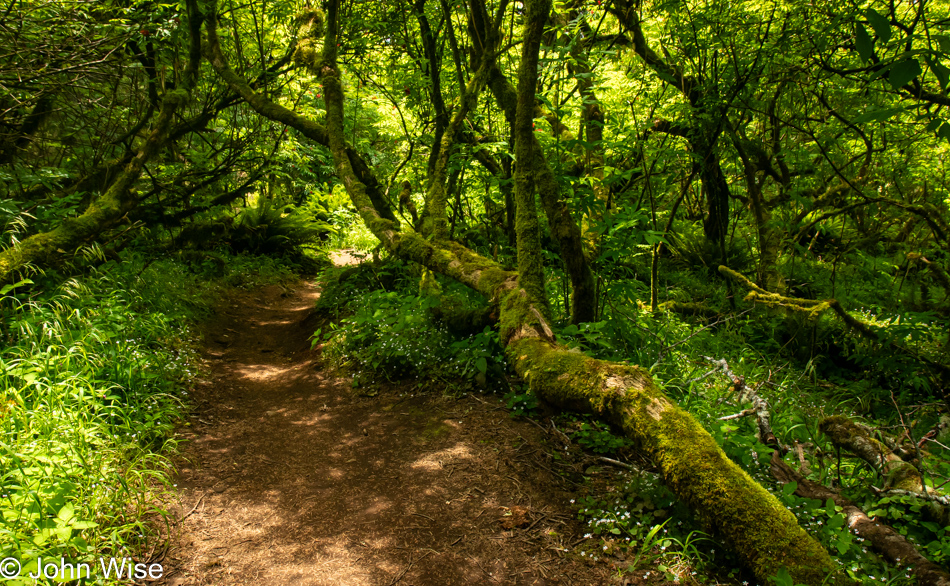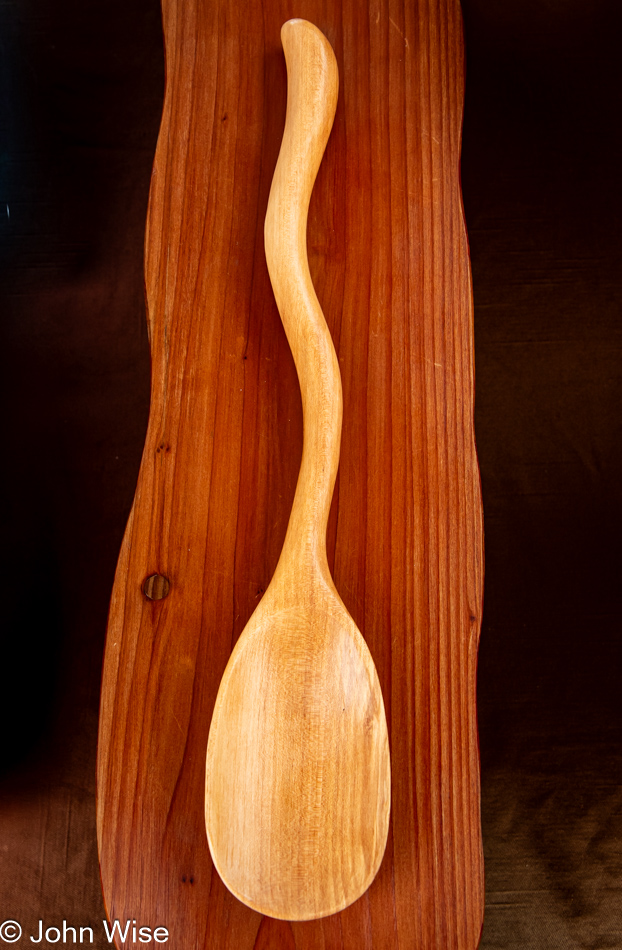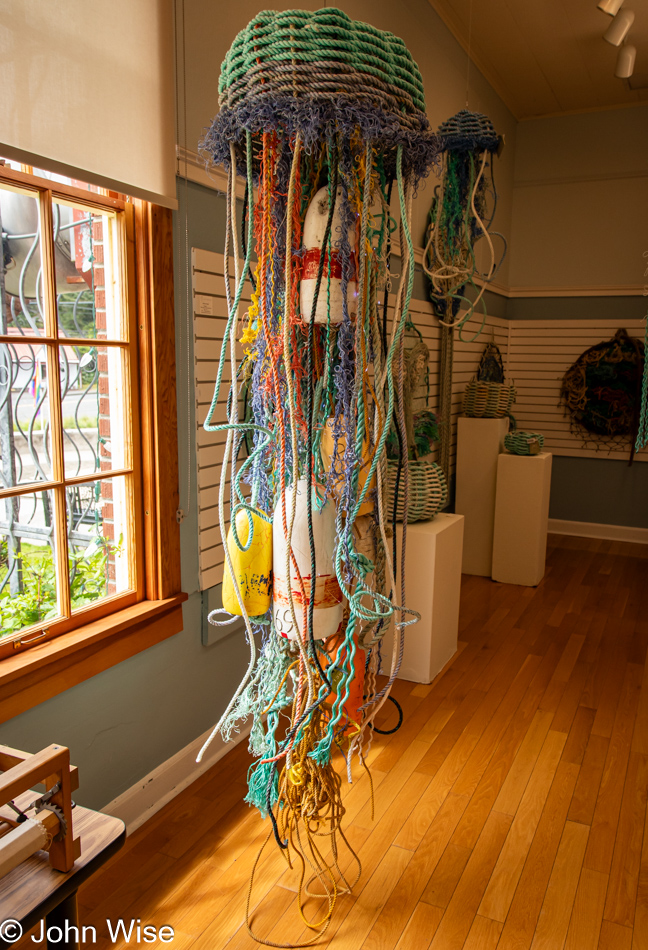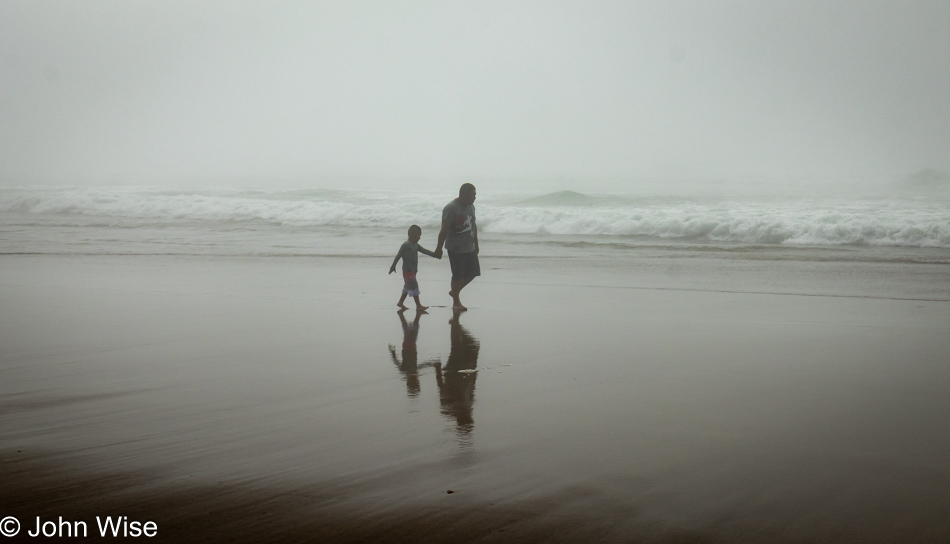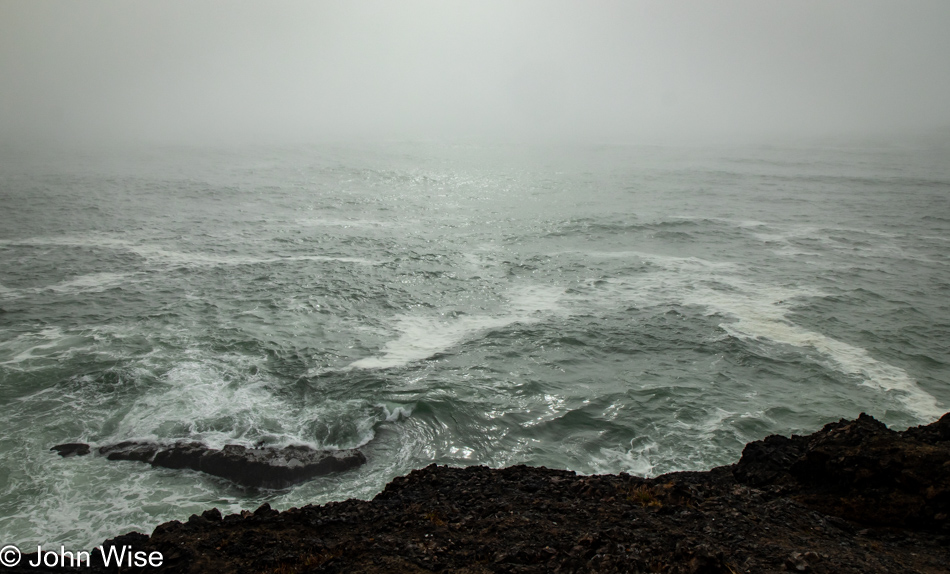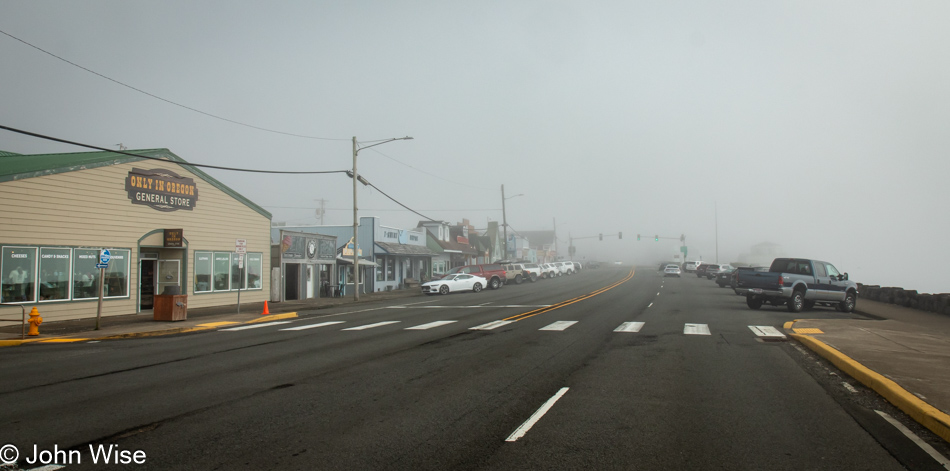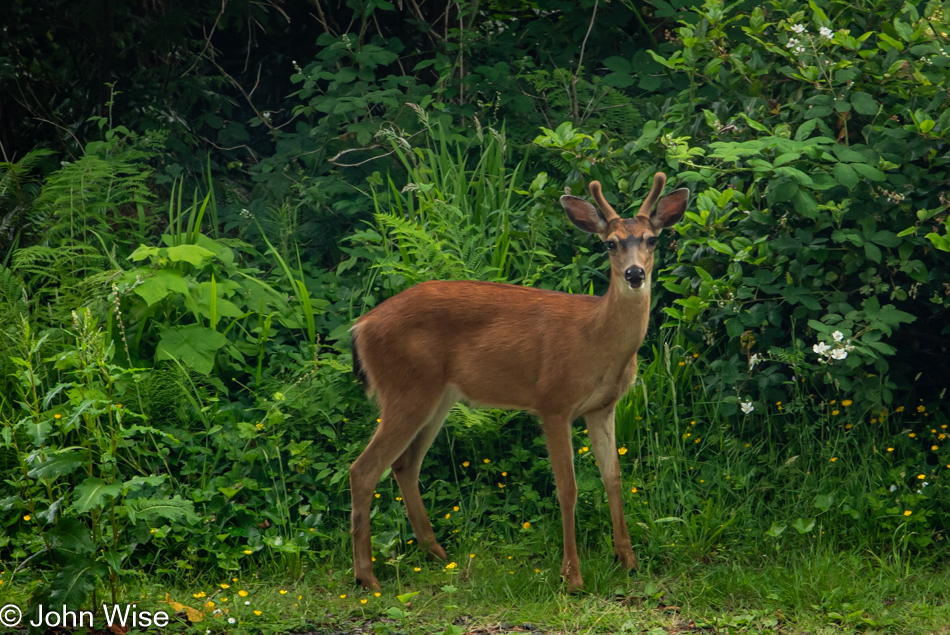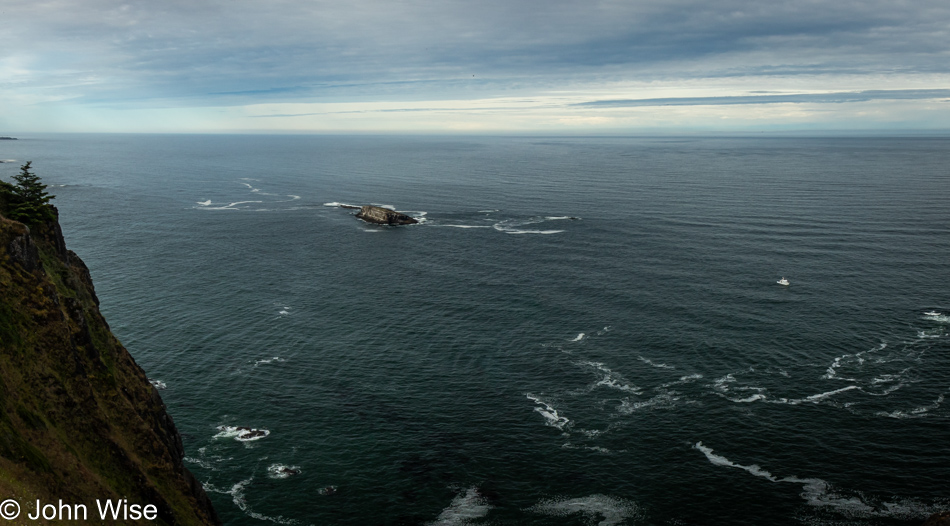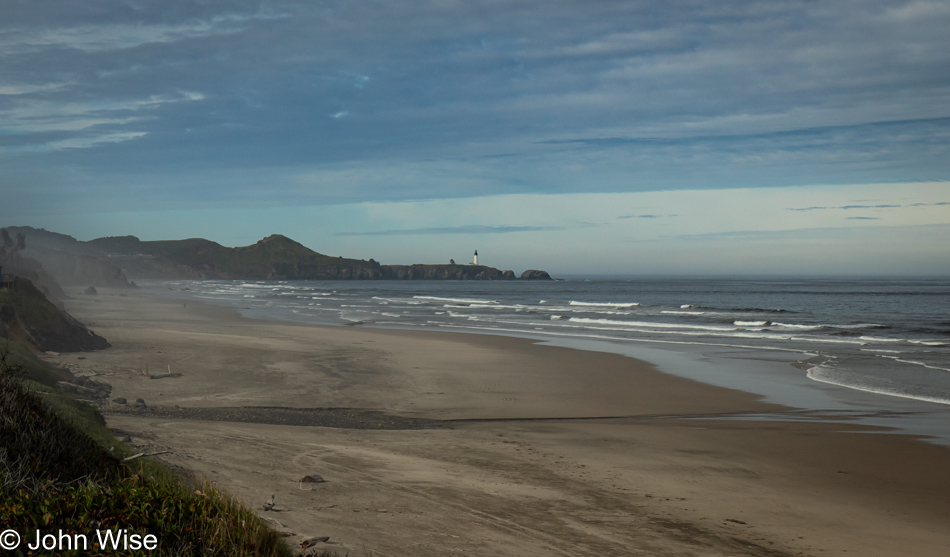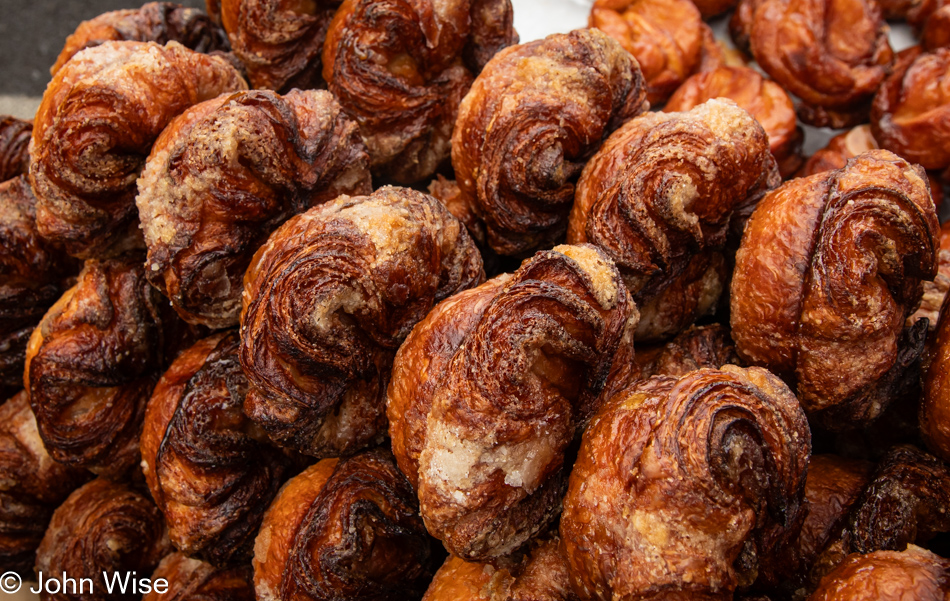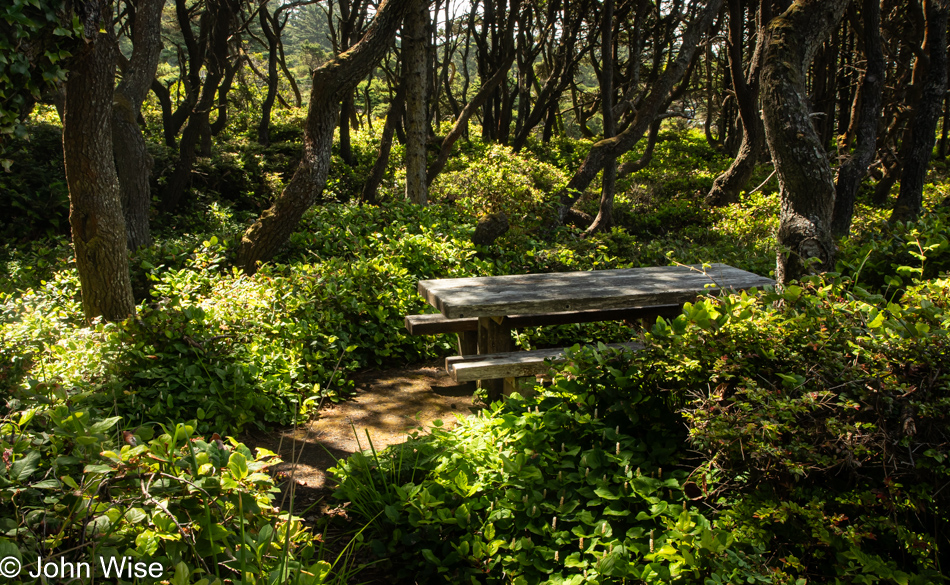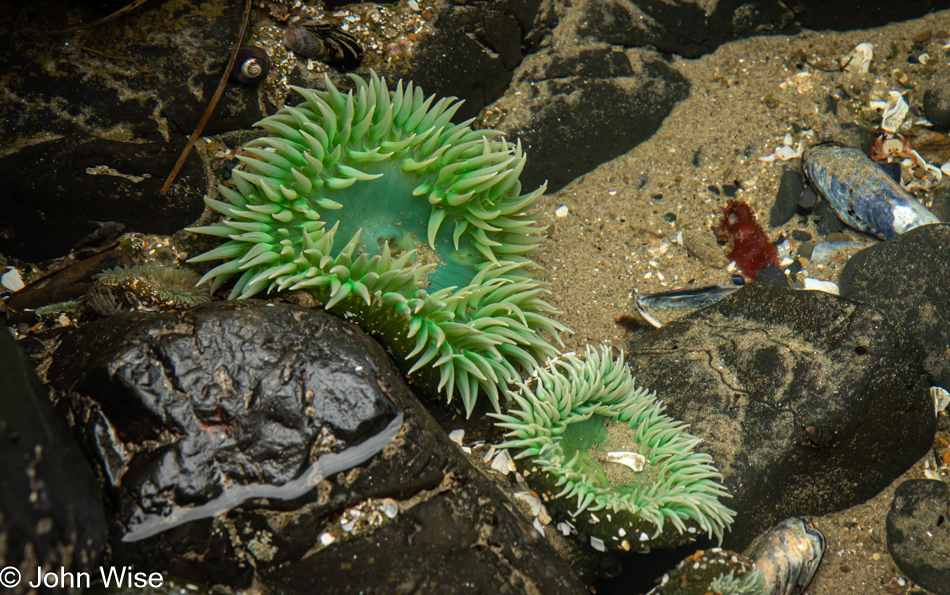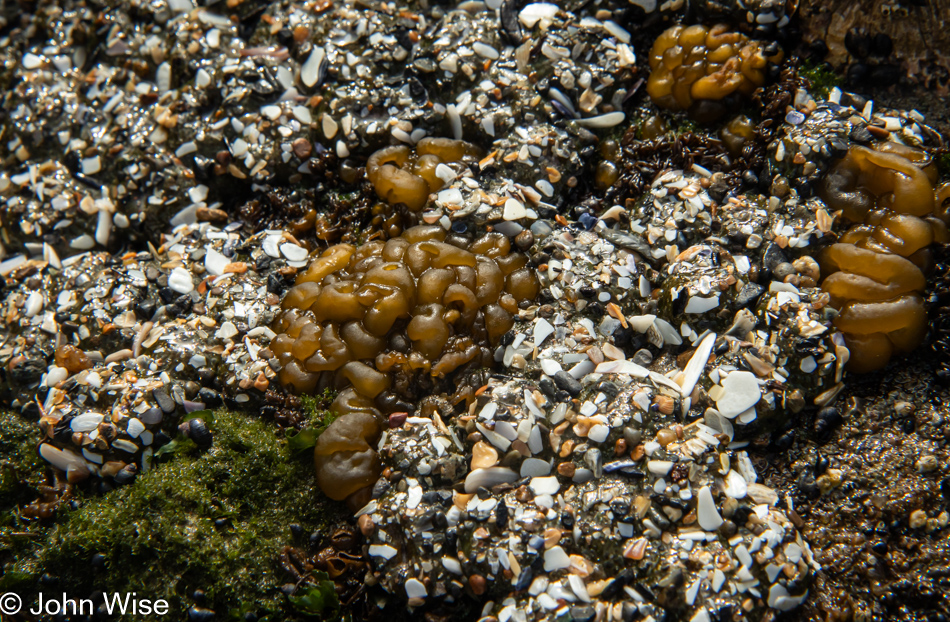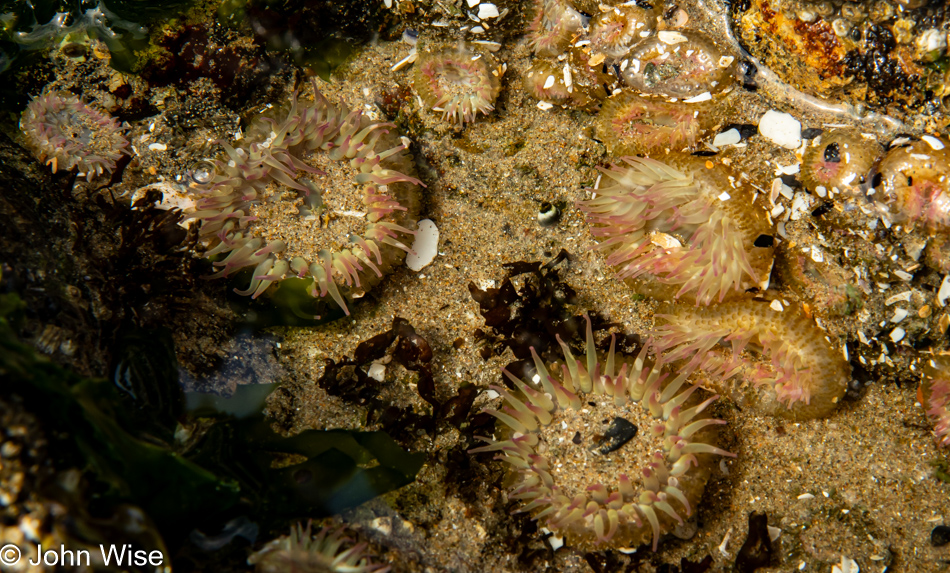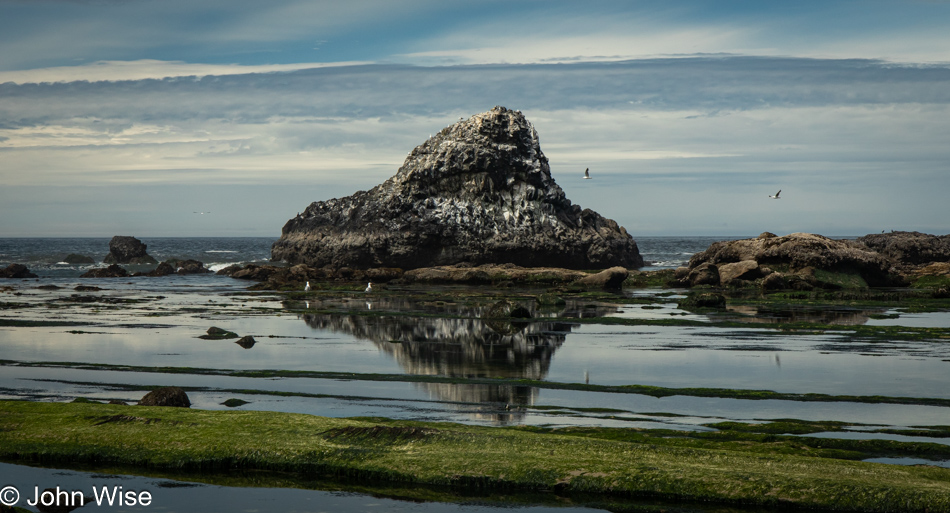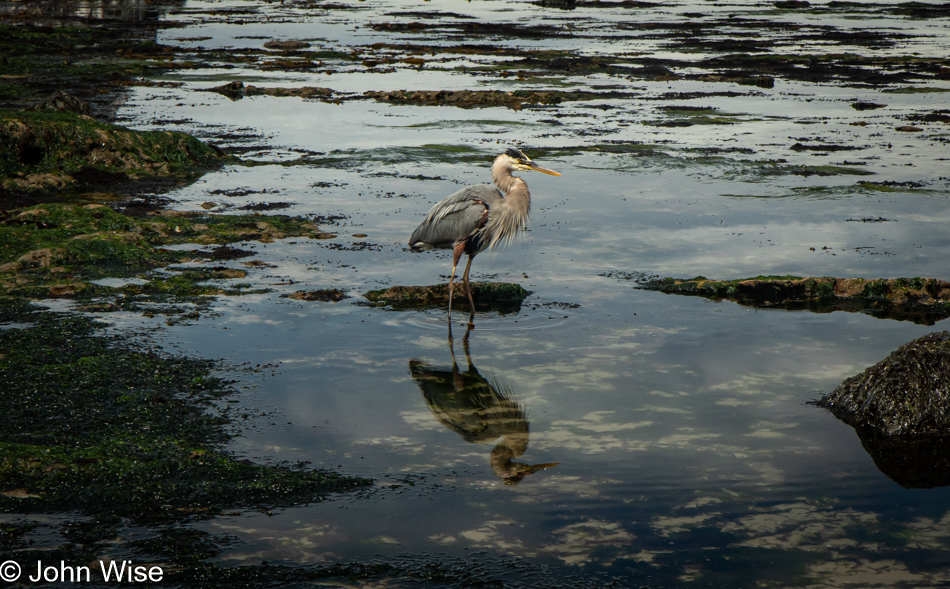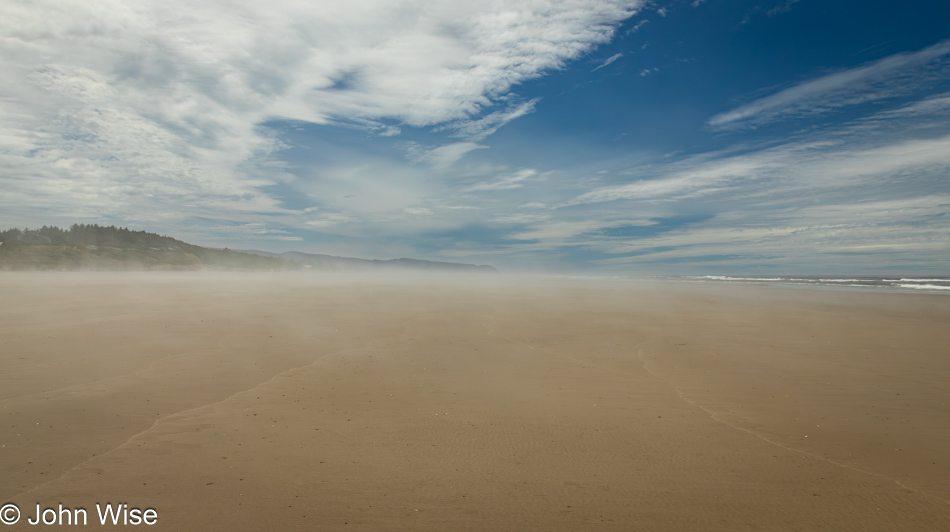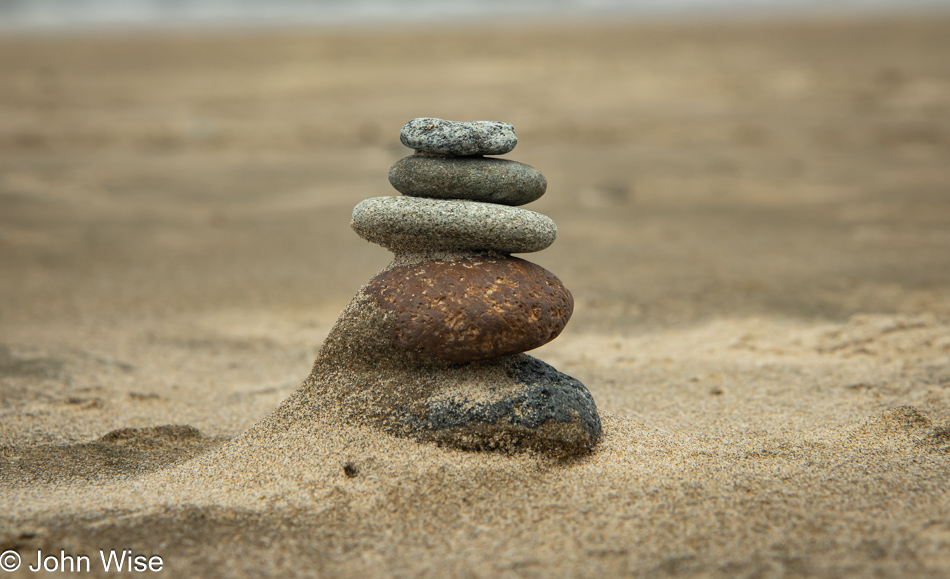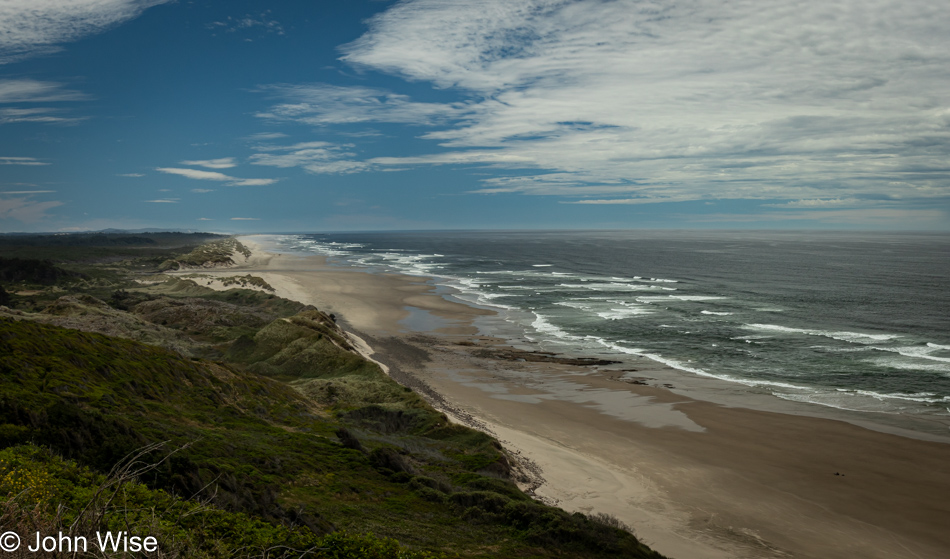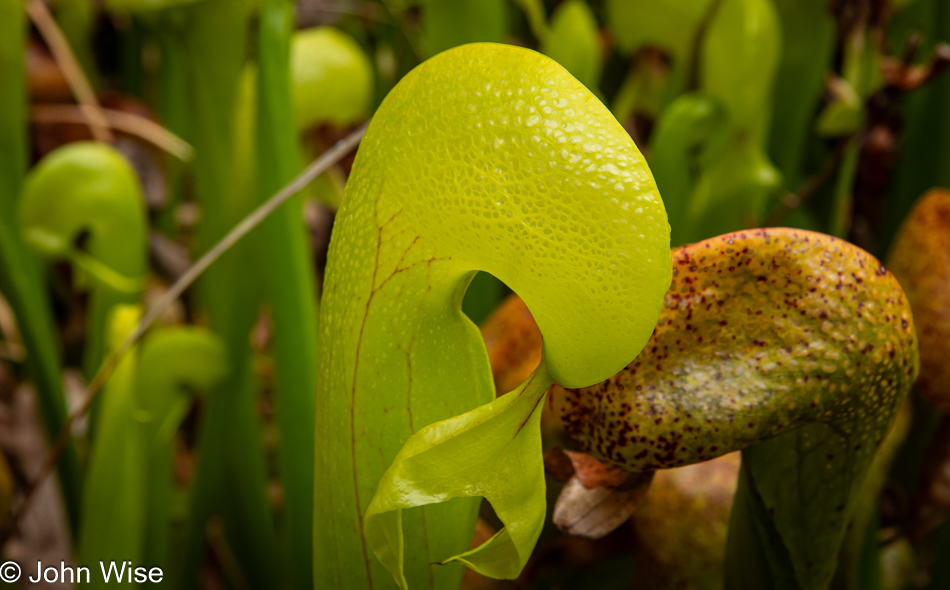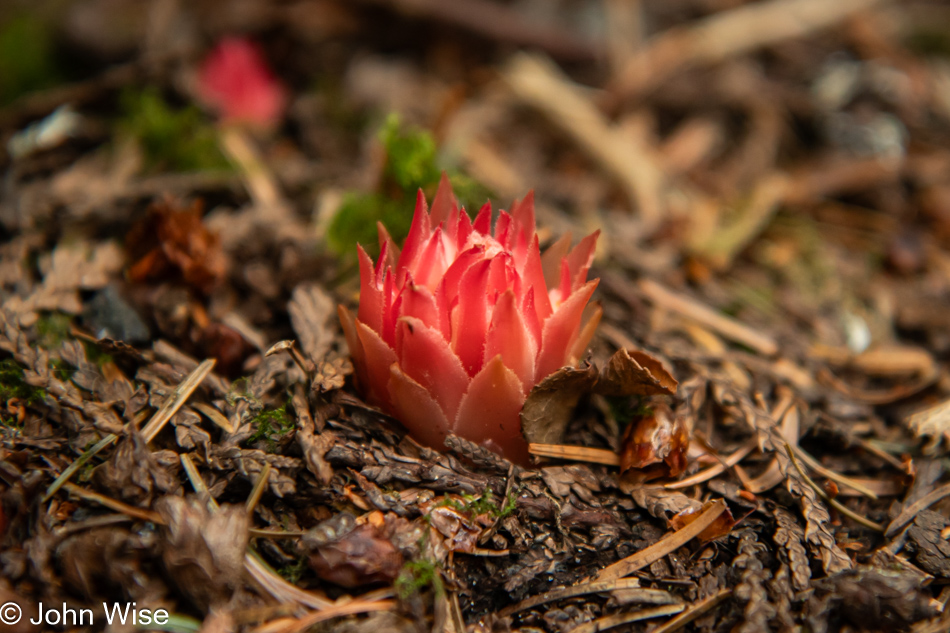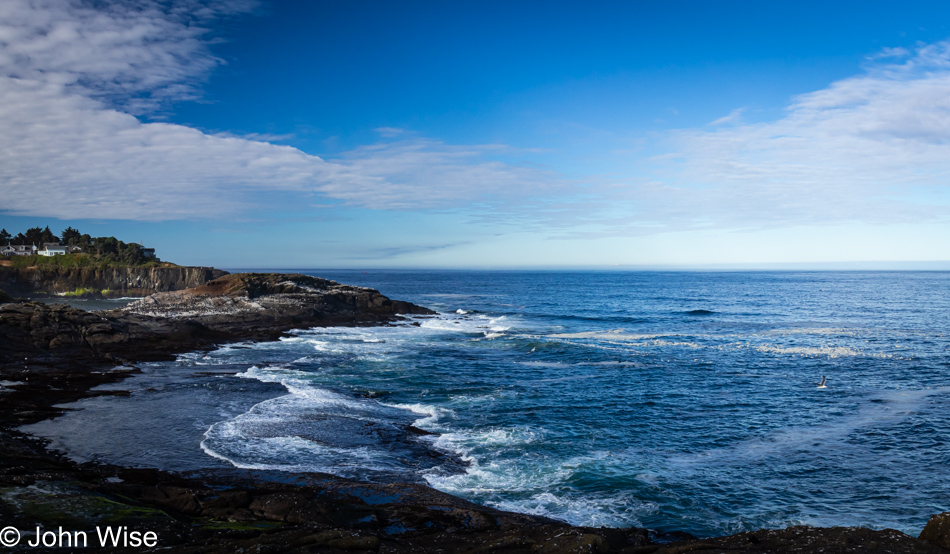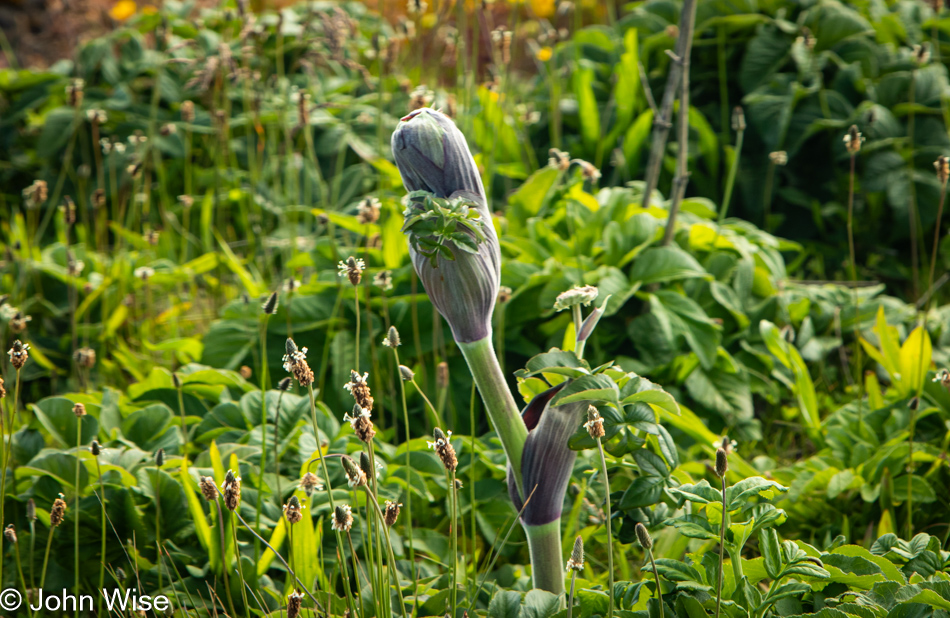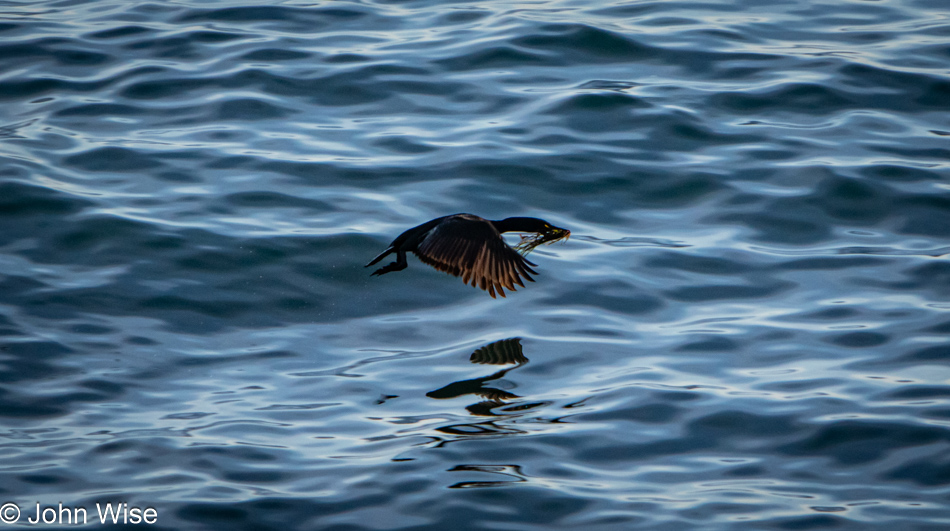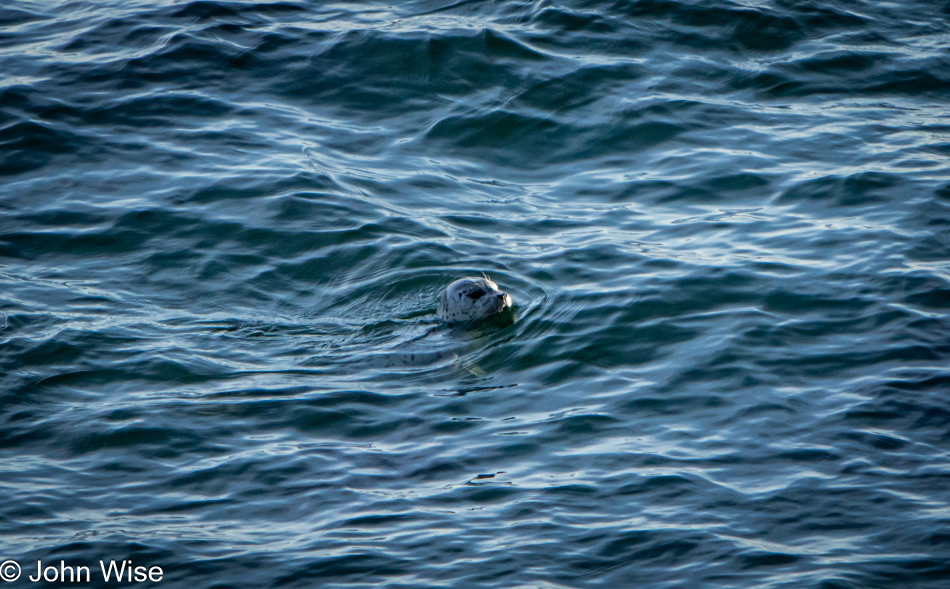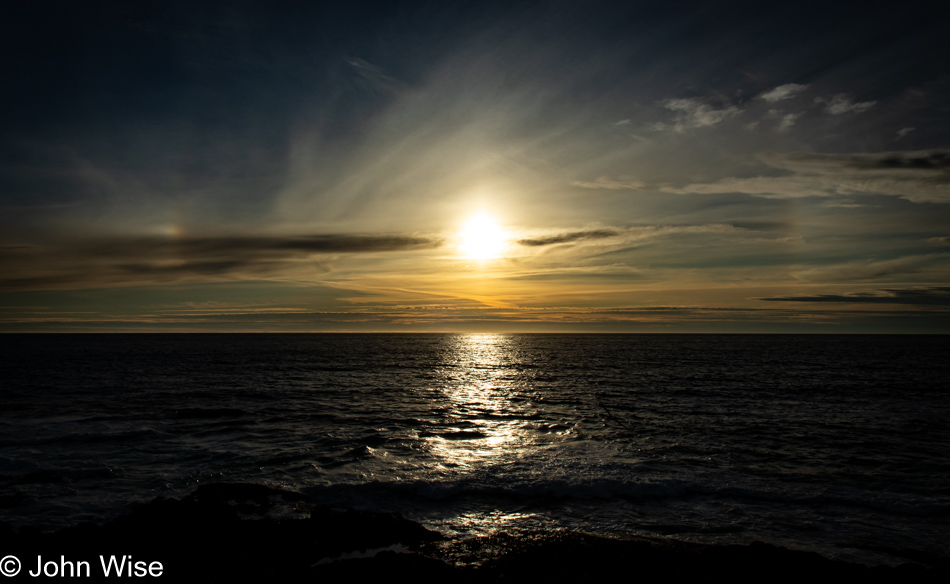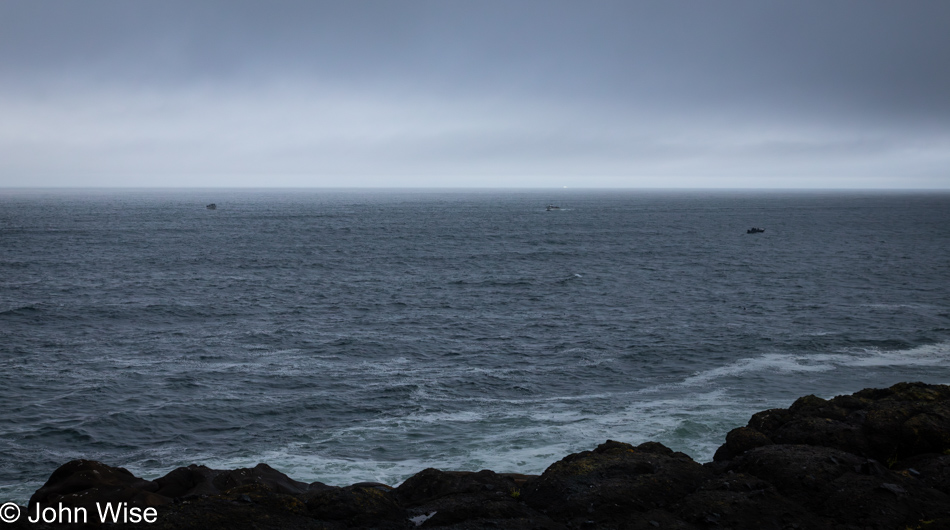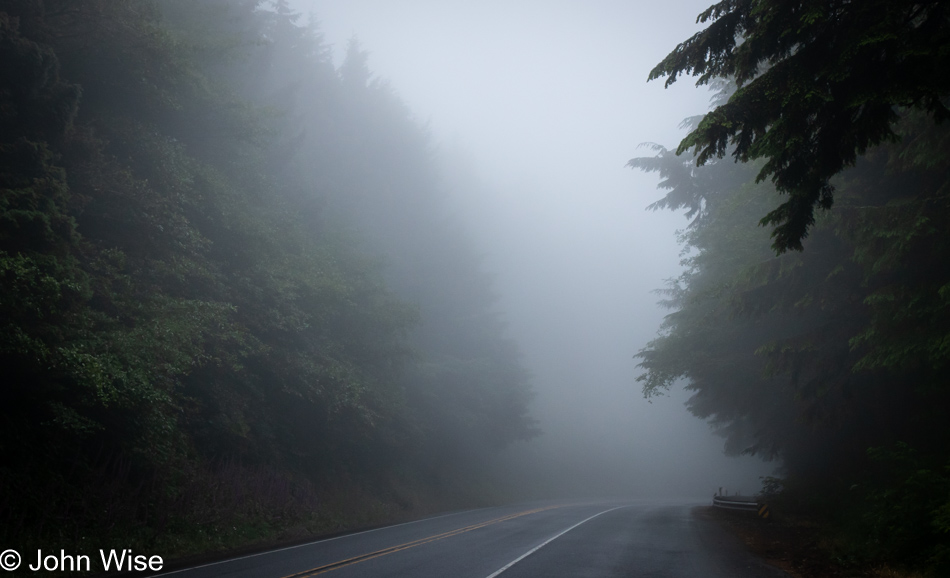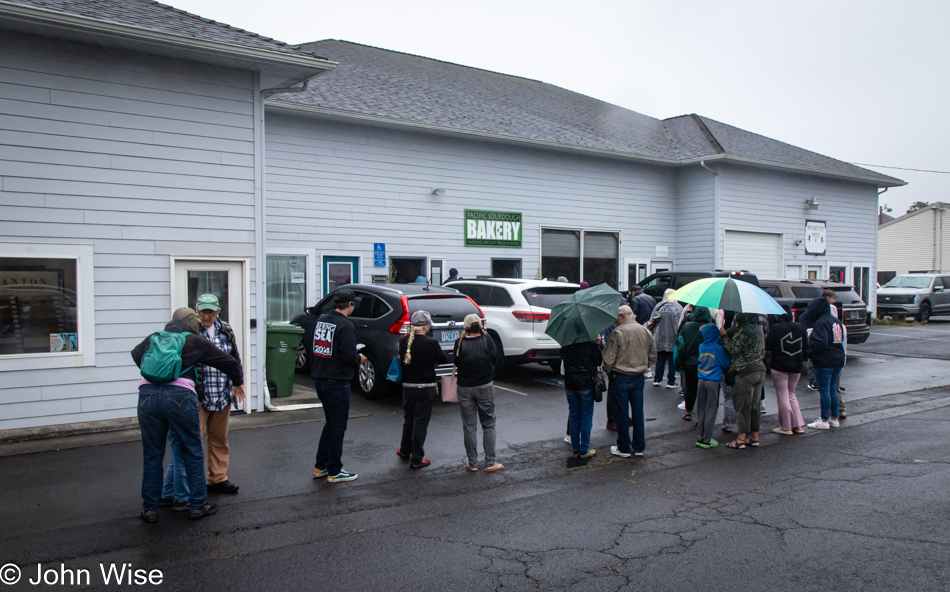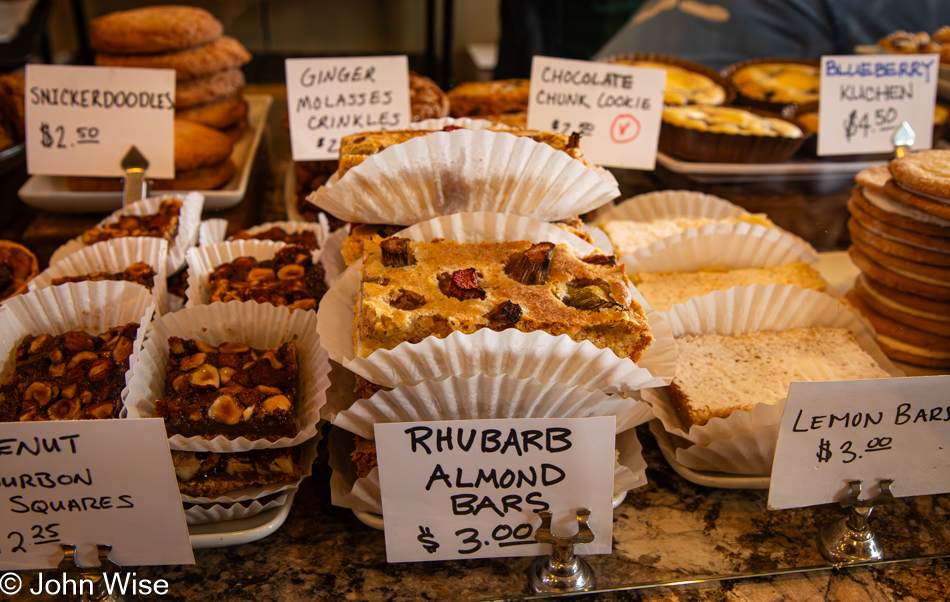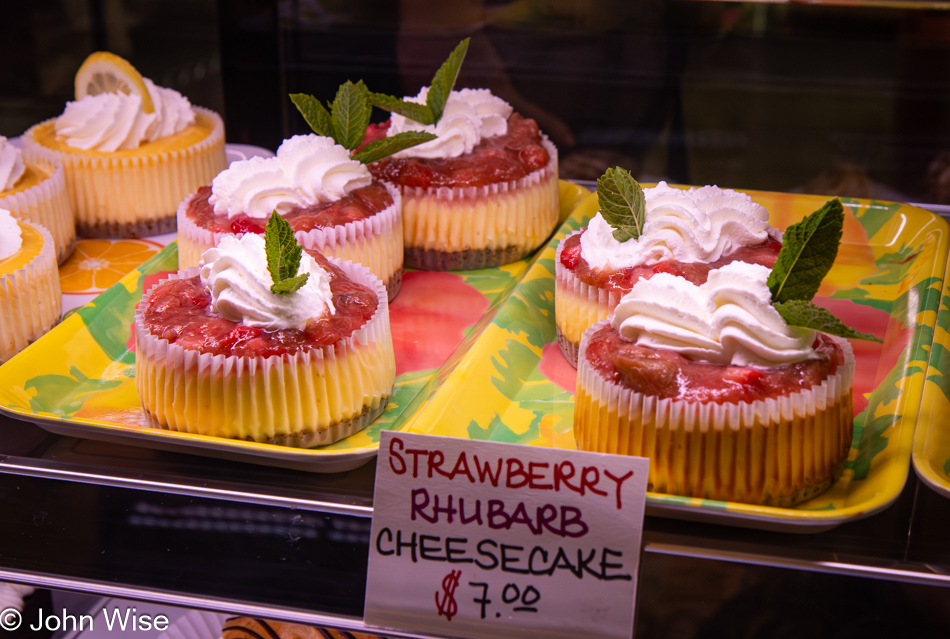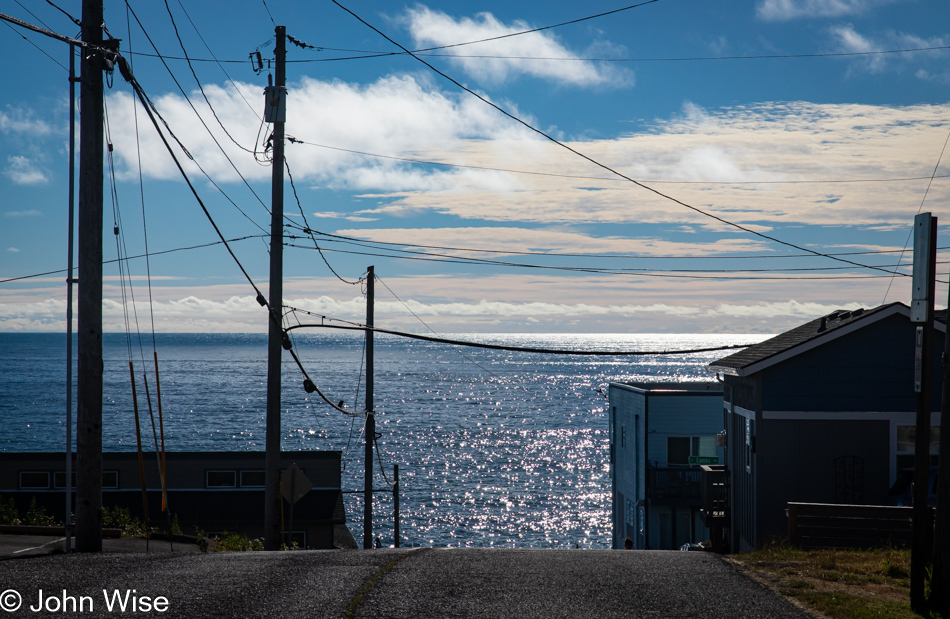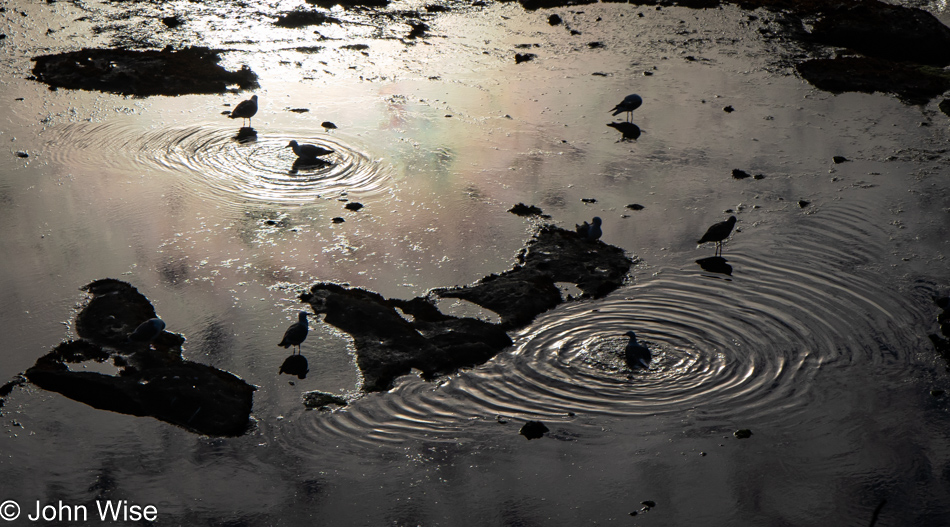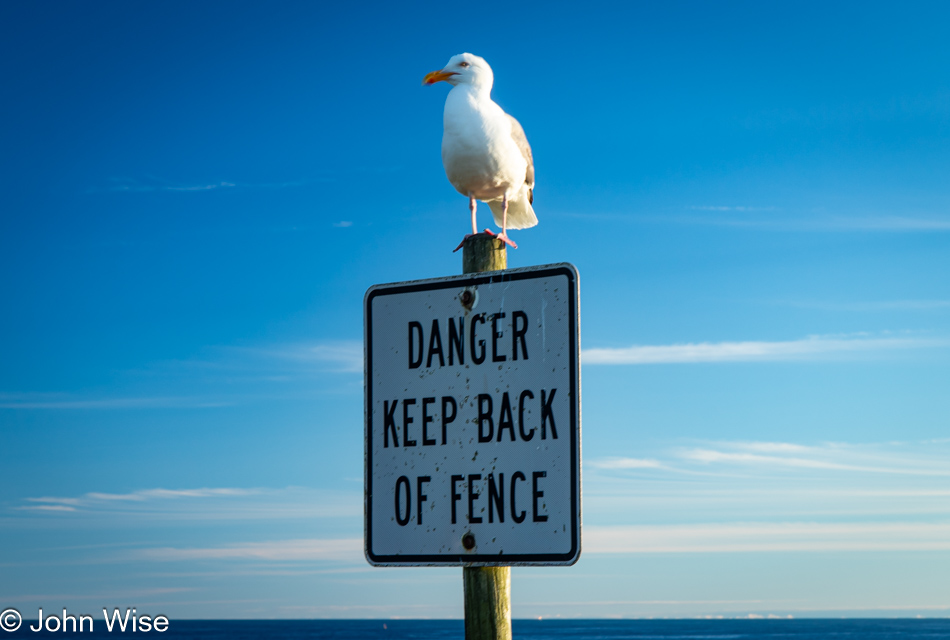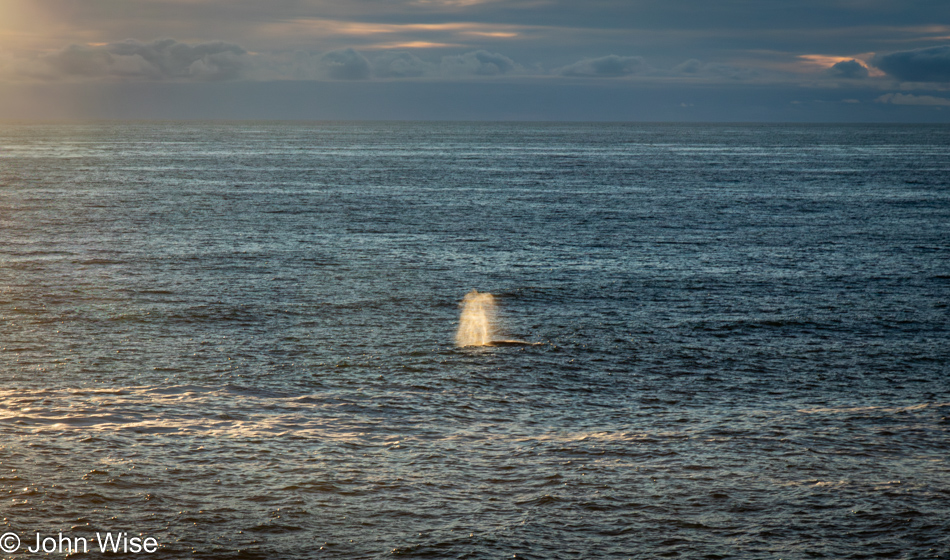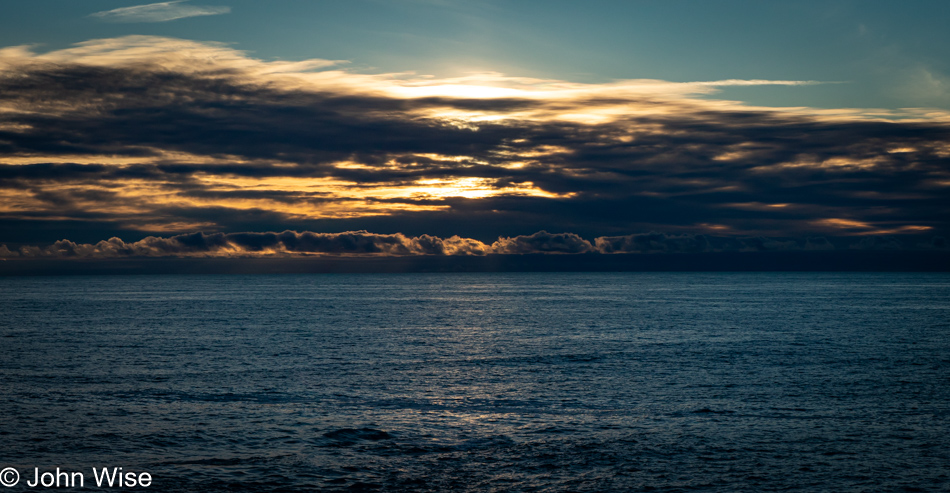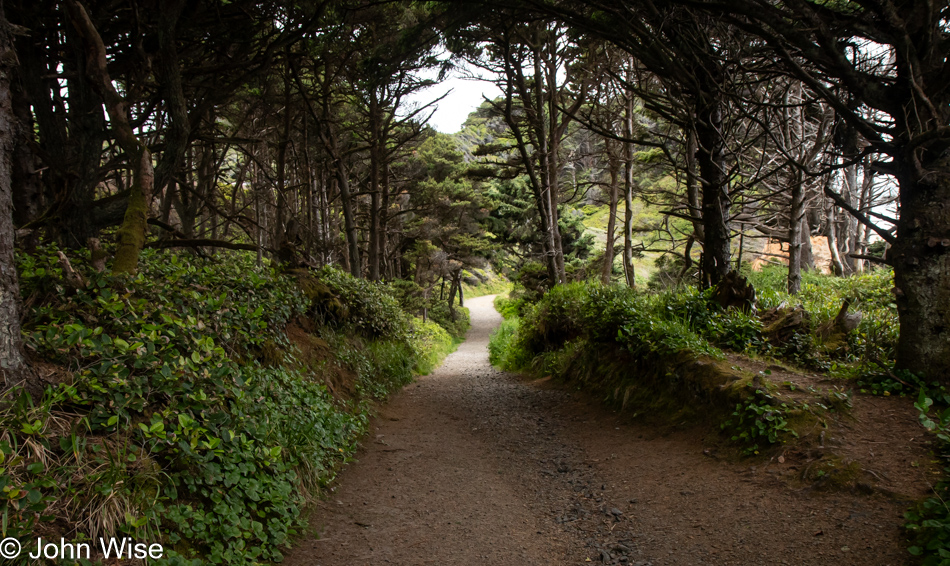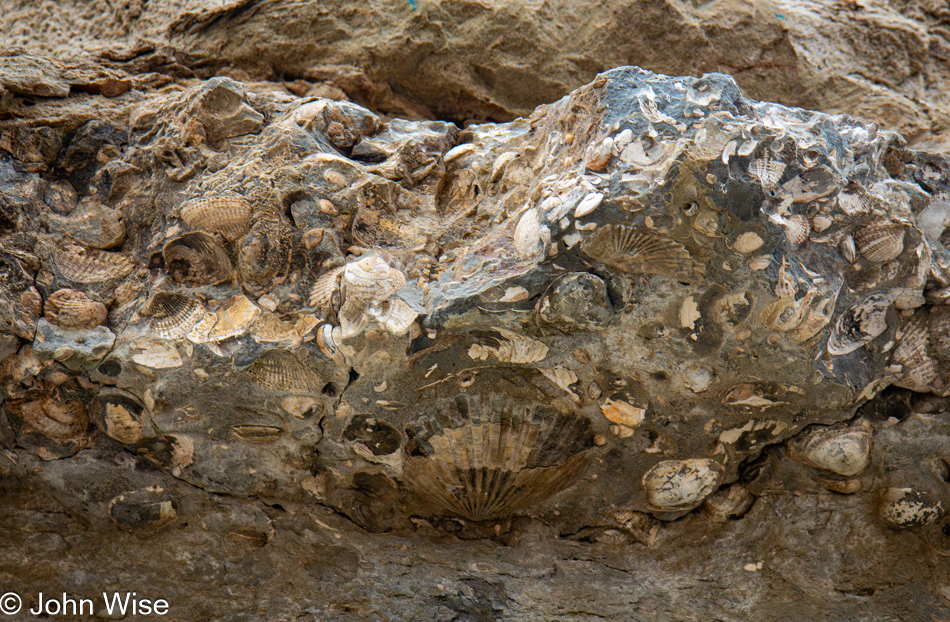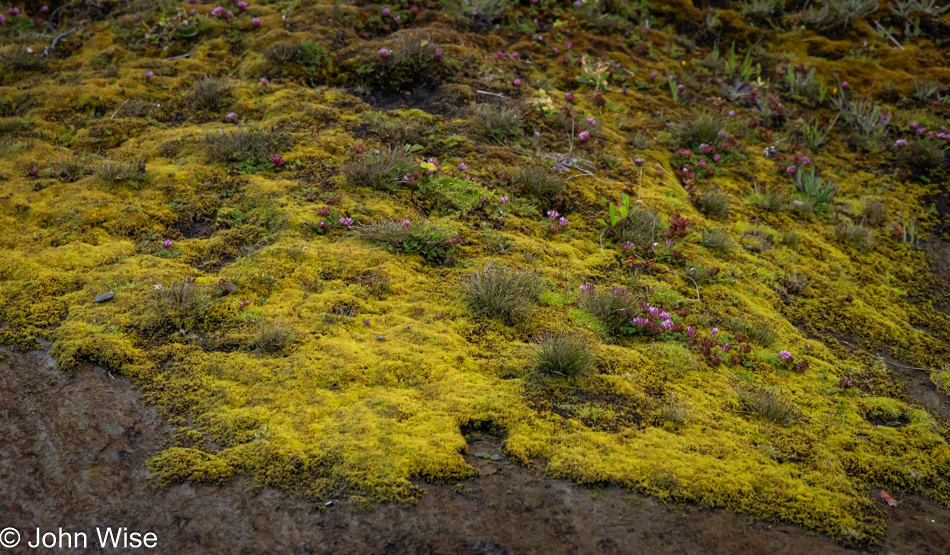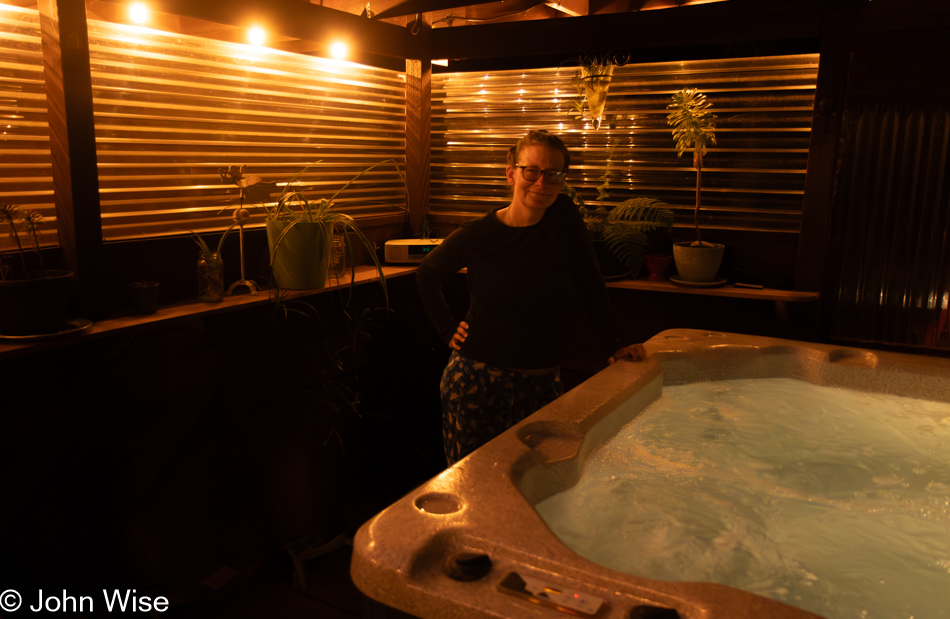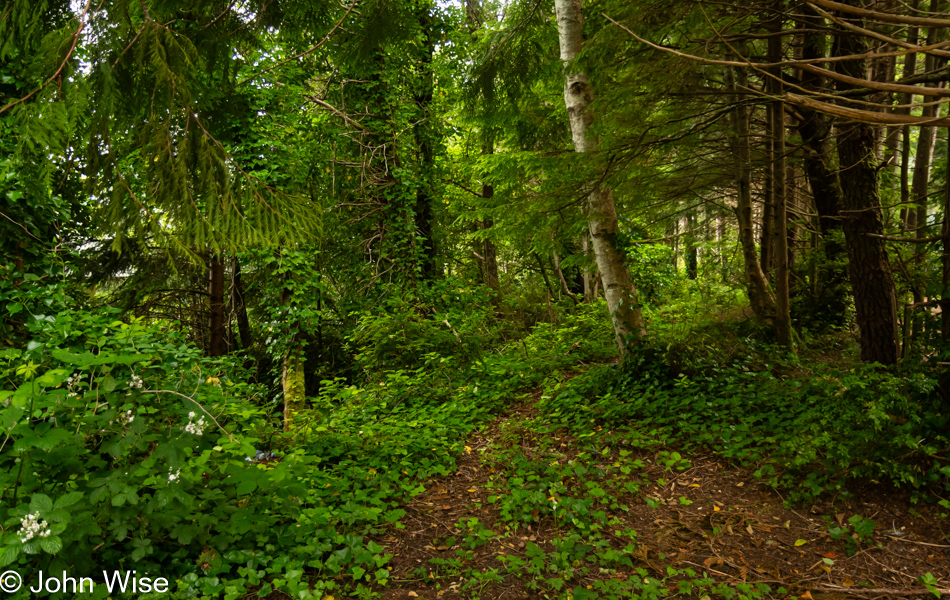
If all goes well and we can finagle the vacation days and energy, we’ll be back in Oregon this November. In anticipation of that, I’ve already booked a couple of days at the Carl G. Washburne State Park, where a yurt will await our arrival for Thanksgiving. Should we return, we’ll hopefully be able to stop in and visit June and Marvin and snap a photo of the two so we can share who the gracious couple is who lent us their dream cottage in the woods. This is the small path that cuts over to the next street we’ve been walking back and forth between Highway 101 and their home. If you get the idea that I’m scrambling to capture every detail of our surroundings so we can forever relive these beautiful little moments and things that typically have no relevance, you’d be correct.
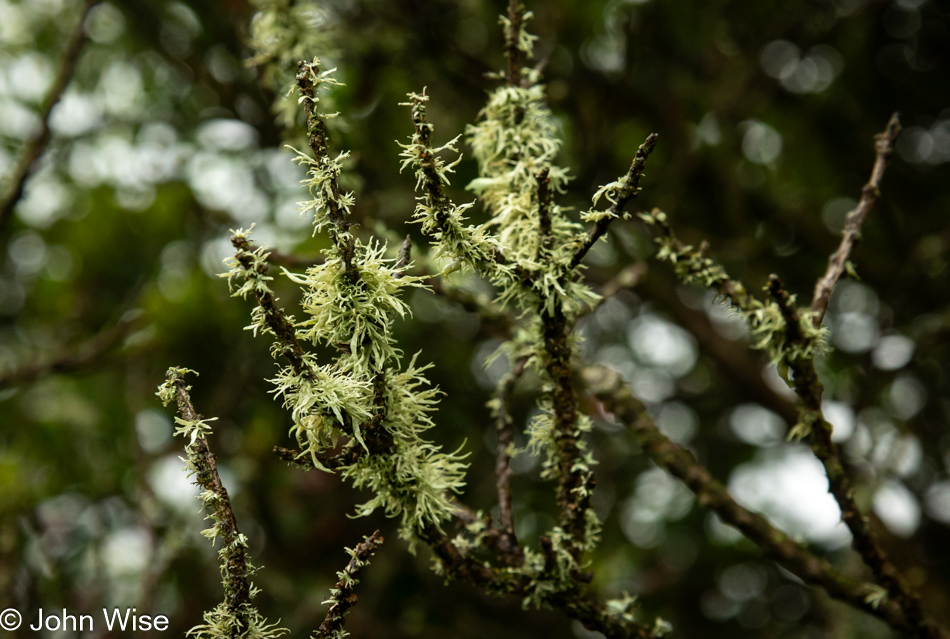
It feels like it was just yesterday that I was posting a photo of moss. Oh yeah, I did, but it wasn’t this kind of moss.

Jeez, I almost forgot to post dripping needles, an iconic sight, along with drops of moisture on ferns. Now I’ve got to go back and be sure if I’ve shared an image of that.
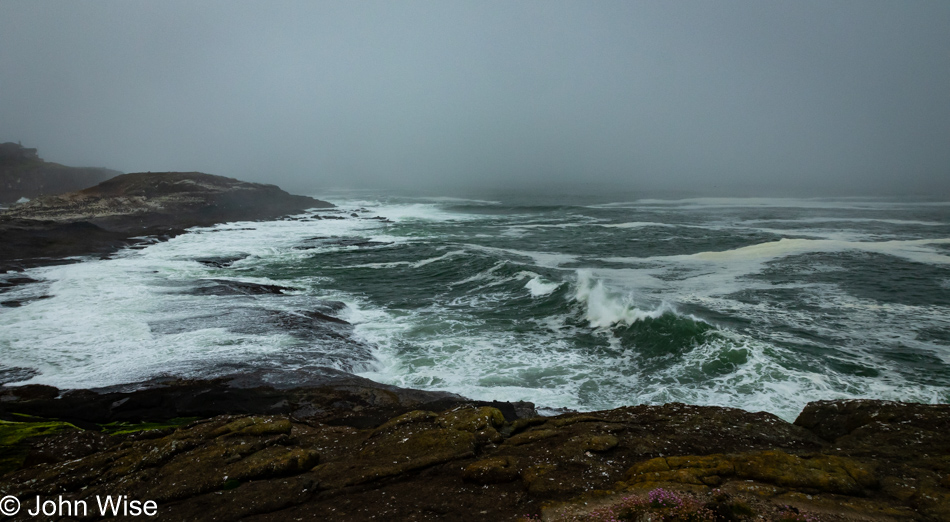
Stormy looking ocean, check. This dark green churn is a common sight in the fall during windy, rainy days; it’s part of the allure for Caroline and me as the tempests out here feel moody while also an inviting reason for nesting.
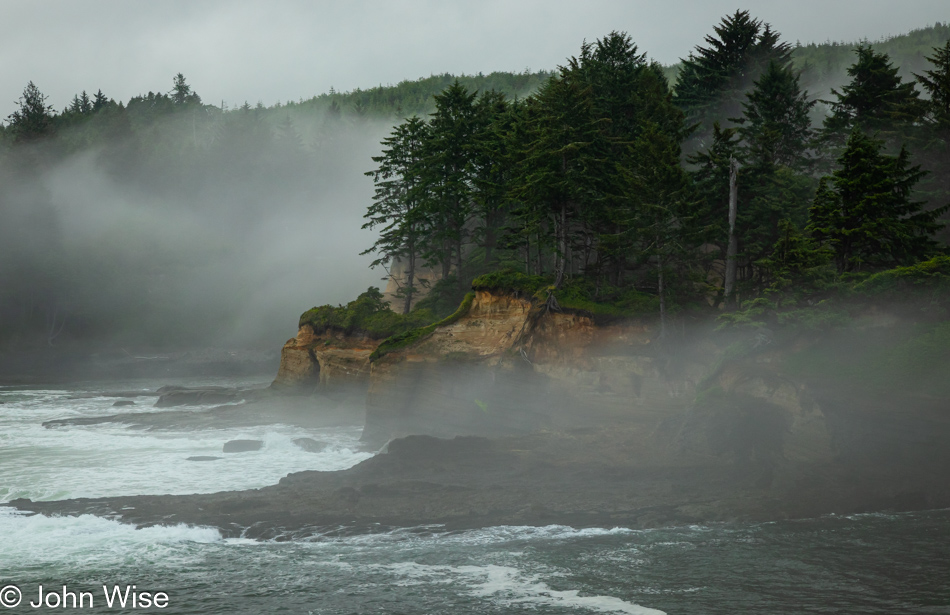
This crazy idea that we are alive and able to witness such sights with our own eyes is so damned extraordinary. Saying something like this, I can hear the chorus of those who might answer such a statement with, “Yeah, for those who can afford it.” Sorry, but nearly everyone, at least a very solid majority, could easily afford it. If they claim that money is too tight, I dispute that by saying it’s a lie, at least a serious exaggeration. Too many are over-extended with stupid shit, such as too many cars, too much vehicle insurance, too many subscription services for entertainment, too many square feet for their home, and too much eating out. Opportunities to see the fog rolling up cliffsides and over forests are mystical experiences, in the imagination anyway. I’ll be the first to admit that I’m not lamenting how the vast majority of Americans are content to be at home, living in isolation, afraid of what comes after the axe falls. Stay at home, everyone; leave the solitude and the solemnity found in beautiful places to those who truly appreciate this kind of stuff. To the people on the Lower Cascade Head Trail yesterday whose opinions we were forced to listen to about ‘Fucking Starbucks,” “That shitty person,” and “My boss is so stupid,” we don’t care, and nor should you. Stop normalizing your lament and habituating this idea that there’s a catharsis to be found in vocalizing your troubles when you should have done that crap on your way to the trail and then tuned in to what the world was offering you instead of what you could impose on others within earshot.
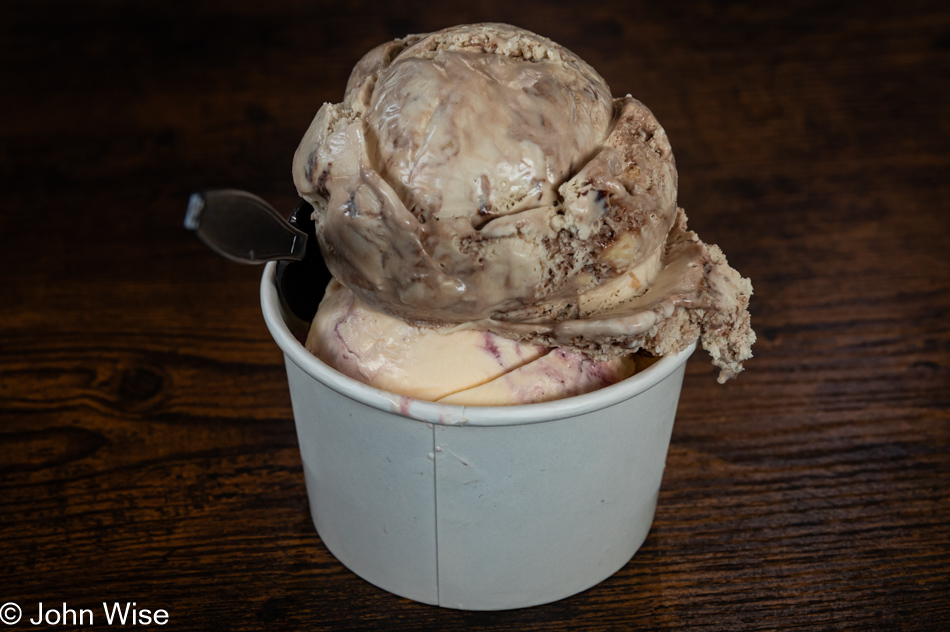
I should set up an ice cream stand at popular trailheads and offer free scoops in trade for a promise from the visitors to keep their voices down and not talk about current events, jobs, school, or people they don’t like. I wouldn’t get rich, but the others out on a trail in serene places might appreciate my effort, that is, until those who take the ice cream toss their trash into the woods. Speaking of trash, attention, women, please stop leaving your toilet paper just off the trail; take it with you. Carry a plastic bag with you and stuff it in that. The rains will not wash your pee-pee paper away as quickly as you might think. Should you be wondering why I know the TP belongs to women, guys don’t dab piss from the ends of their dicks. They shake it off and let their underwear capture the last drop. Regarding the ice cream, we needed to visit Newport, which is south of us, because yesterday, I had taken off a sizable amount of shin skin and needed a bandage. Having our priorities in order, we stopped for the ice cream first and then fixed the booboo.

Turning onto the street that let us enter the parking lot for Walgreens, we saw this sign we’d never noticed before about a road we’d never heard of prior to this moment. U.S. Route 20 runs 3,365 miles (5,415km) from here in Newport, Oregon, all the way to Boston, Massachusets, wow!
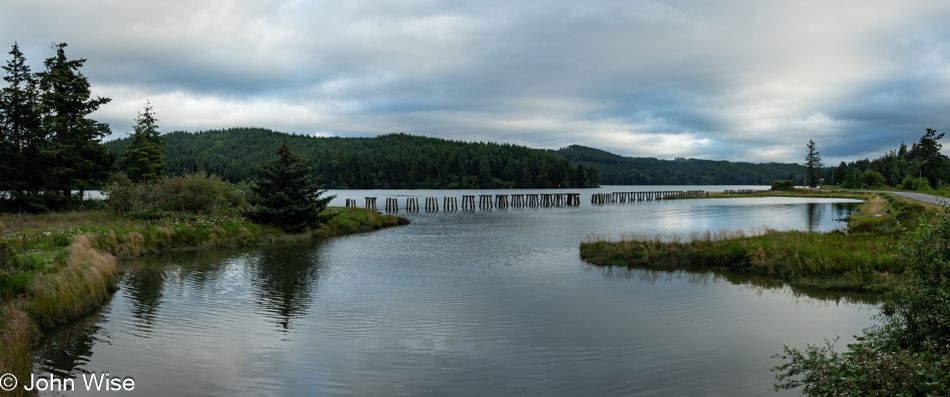
It turns out that just recently, when we’d taken the back road along the Siletz River, we came out on U.S. Route 20 next to Toledo, Oregon. This evening, we are driving the scenic Yaquina Bay Road from Toledo back to Newport.

We first saw the oyster midden before reading that we were at the Oregon Oyster Farms, founded in 1907 and the oldest oyster farm in the state. Caroline suggested that maybe we can visit and buy some oysters should we make it back to Oregon this November.
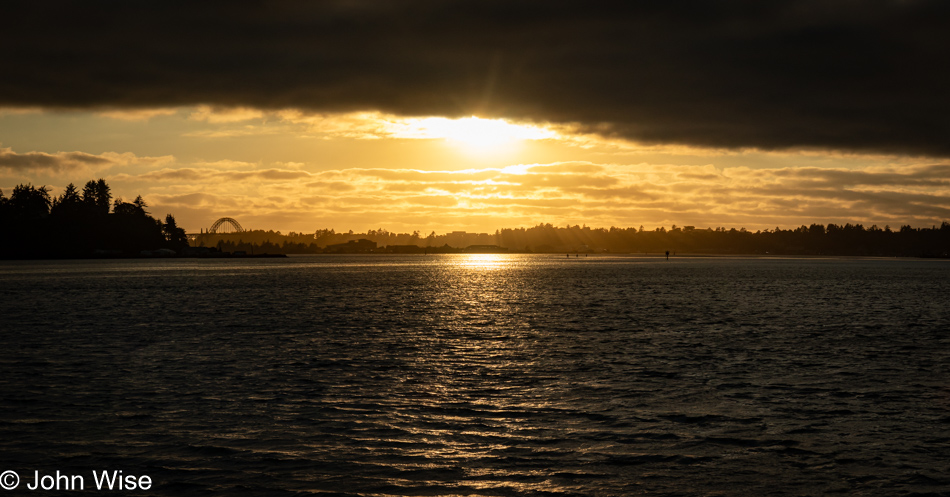
So many times, we’ve been on this coast and only now seem to realize that maybe we’ve been too preoccupied with the ocean side of the state. How have we missed being on this side of Yaquina Bay and not looking at the magnificent Newport Bridge from this perspective?
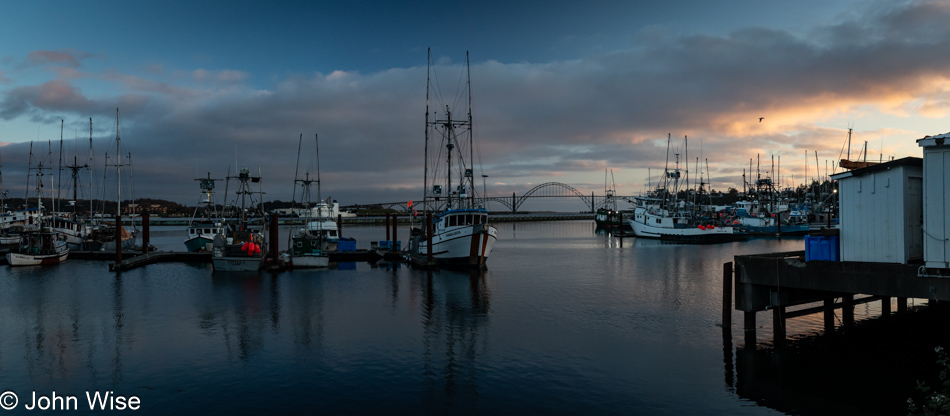
Not only were we offered new views of the bridge at the end of the day, but we stopped in at Local Ocean restaurant a few minutes before they closed and booked a reservation for tomorrow night.
